FORGET ME NOT, 2024
FORGET ME NOT, 2024
Installation at the Tröckneturm (drying tower) in St. Gallen, Switzerland
23.08.2024 – 8.09.2024
In 2020, the discovery of old photographs inspired me to create a textile installation at the Tröckneturm (drying tower) in St. Gallen, Switzerland. The St. Gallen Tröckneturm is a legacy of the region’s textile industry, which has been active for centuries. In the 19th century, these buildings were used to dry wet, dyed fabric. The installation aims to (re)interpret the former purpose of this functional building and make it visible and tangible. The project encompasses three aspects. The first is the textile installation itself, the second is an artist book: Forget Me Not / Vergissmeinnicht of my research and photo series by Ladina Bischof documenting the last remaining towers in Switzerland, and the third is a conference day on site in collaboration with Kunst Halle Sankt Gallen and TaDA - Textile and Design Alliance.
Pictures by Ladina Bischof & Andri Vöhringer
See Interview here (Swiss German)
Downlaod Press articles HERE
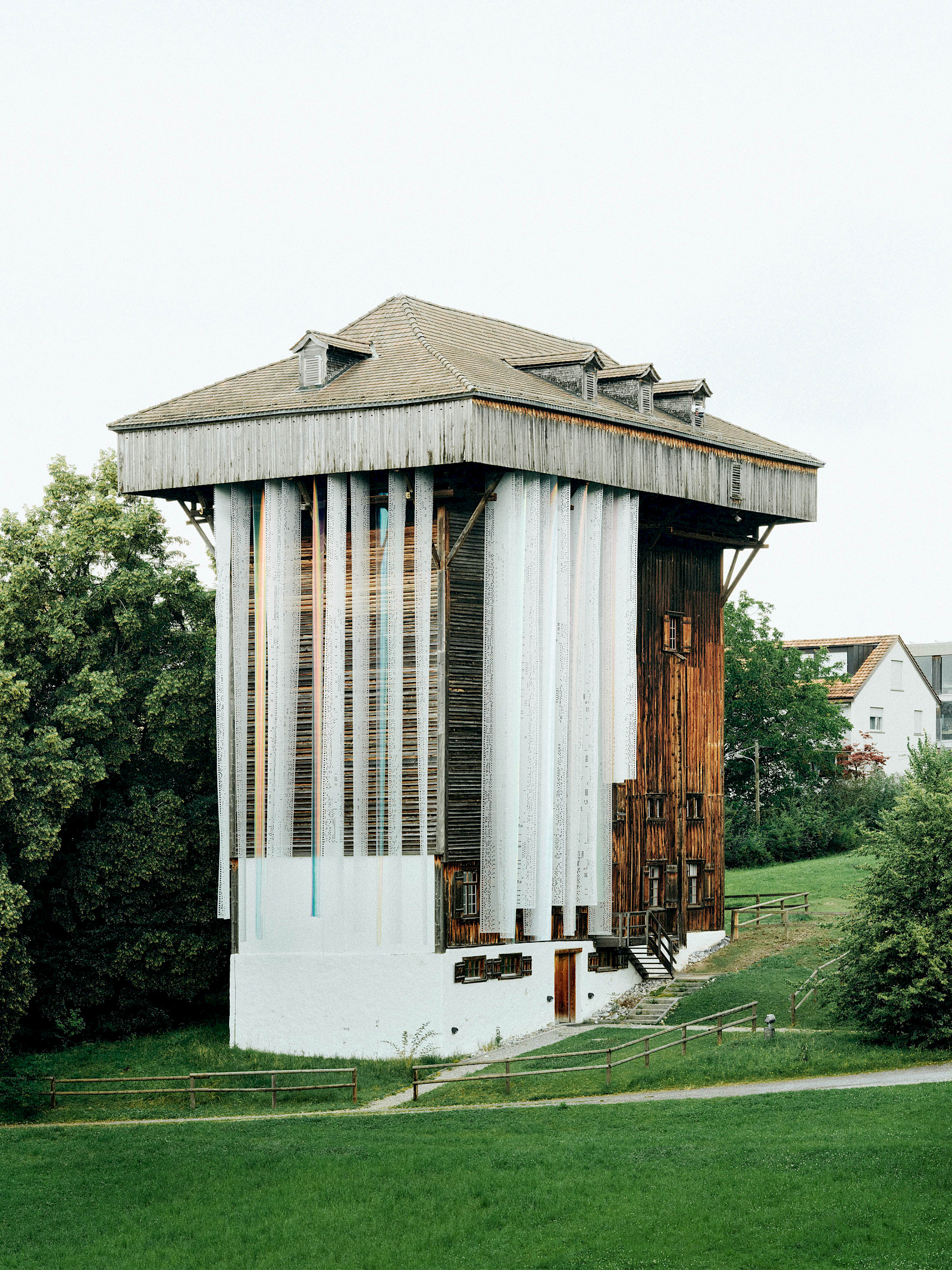
Forget Me Not, 2024, installation at Tröckneturm St. Gallen, laser-cut textile and iridescent foil, Tower: 25 m, Textile panels 15 m
I will have spent my life trying to understand the function of remembering, which is not the opposite of forgetting, but rather its lining. We do not remember. We rewrite memory much as history is rewritten. How can one remember thirst?
Chris Marker, 1983
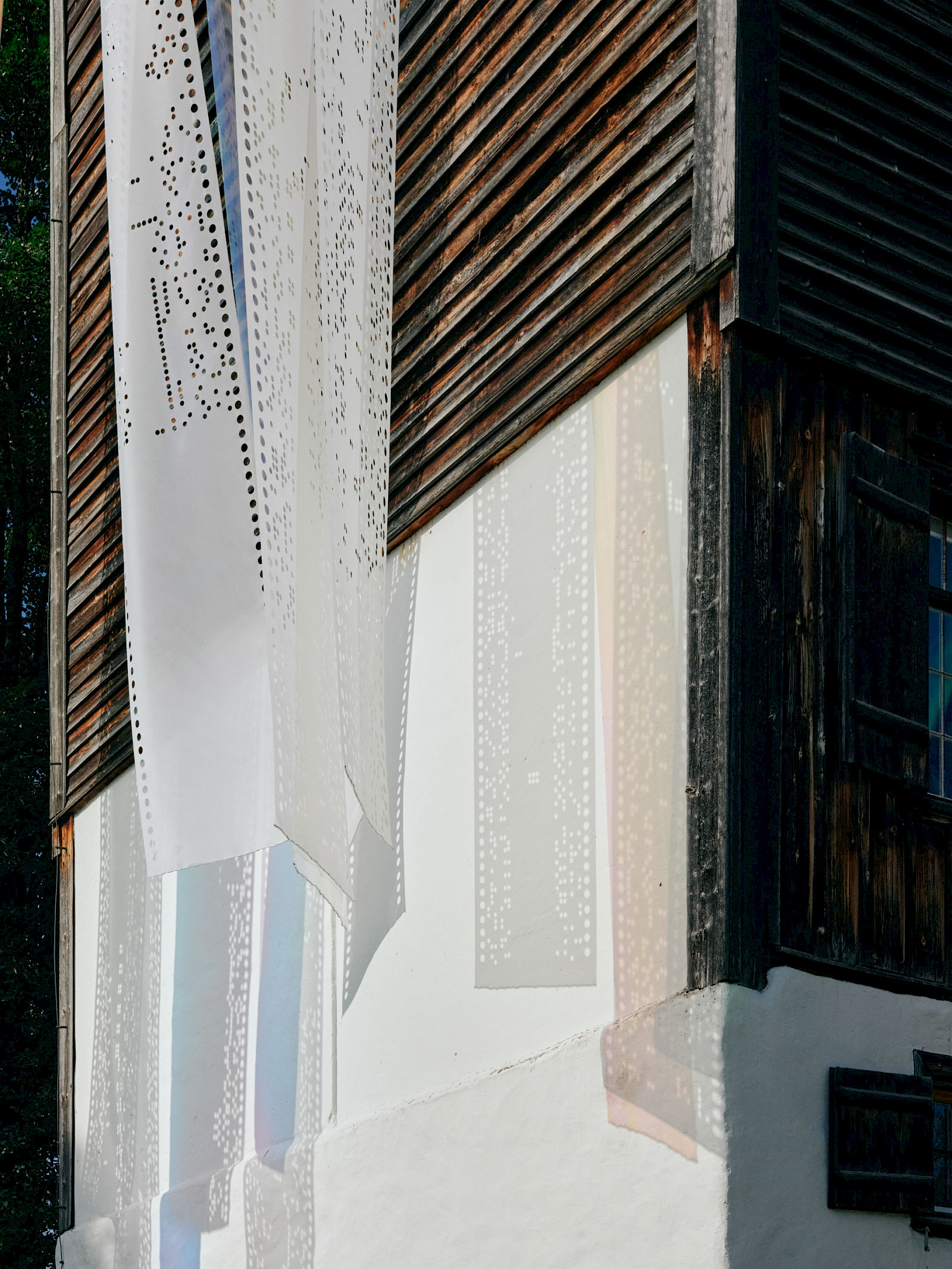
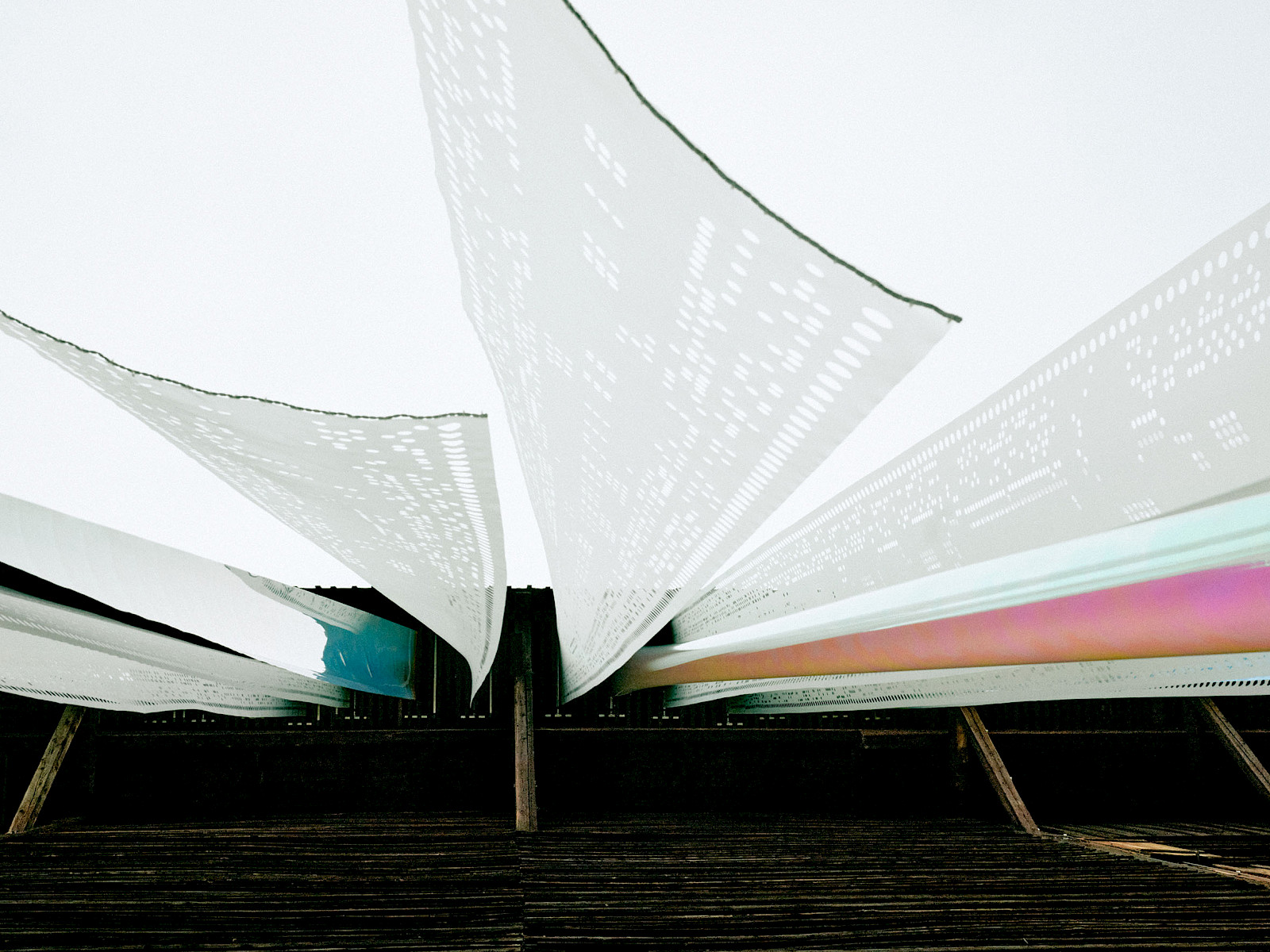
Text in FR
Au cours de l’été 2024, Baechler a initié Forget Me Not, une œuvre d’art à grande échelle inscrite dans l’espace public, déployée au ‘Tröckneturm’, une structure architecturale monumentale située à Saint-Gall, en Suisse orientale. Le Tröckneturm - ou tour de séchage - était historiquement utilisé pour suspendre les tissus humides et teints afin qu’ils sèchent avant d’être coupés et vendus. Des longueurs de tissus lourds étaient accrochées au sommet de la tour, dessinant sur le bois sombre la silhouette des rames de lin rouge fraîchement teint. Si l’on considère généralement la conception ou la teinture comme des éléments clés de la production textile, l’étape du séchage, tout aussi cruciale, est souvent négligée. De même, ces tours, autrefois fonctionnelles, aujourd’hui désactivées, sont également souvent oubliées, n’étant plus les phares d’une industrie autrefois prospère mais des reliques en voie d’extinction, balisant encore l’horizon suisse.
Dans le cadre de cette installation, l’artiste a suspendu des panneaux de tissu hi-tech à la tour dans le but de la réanimer, convoquant l’utilisation historique initiale de la structure - le processus de séchage oublié, l’activité humaine en amont du produit textile fini. Baechler a inscrit au moyen d’une découpe laser des trous dans ces panneaux pour en faire des cartes perforées géantes, procédé de cartes qui permettait initialement la production mécanisée, motif qui est une reproduction de celui utilisé pour broder des fleurs de myosotis (en allemand comme en anglais, Vergissmeinnicht, Forget Me Not - ne m’oublie pas) sur les mouchoirs suisses traditionnels. Nommée d’après ce motif, l’installation Forget Me Not fait appel à la structure désuète et à son histoire pour la conduire à nouveau sur notre champ sensible.
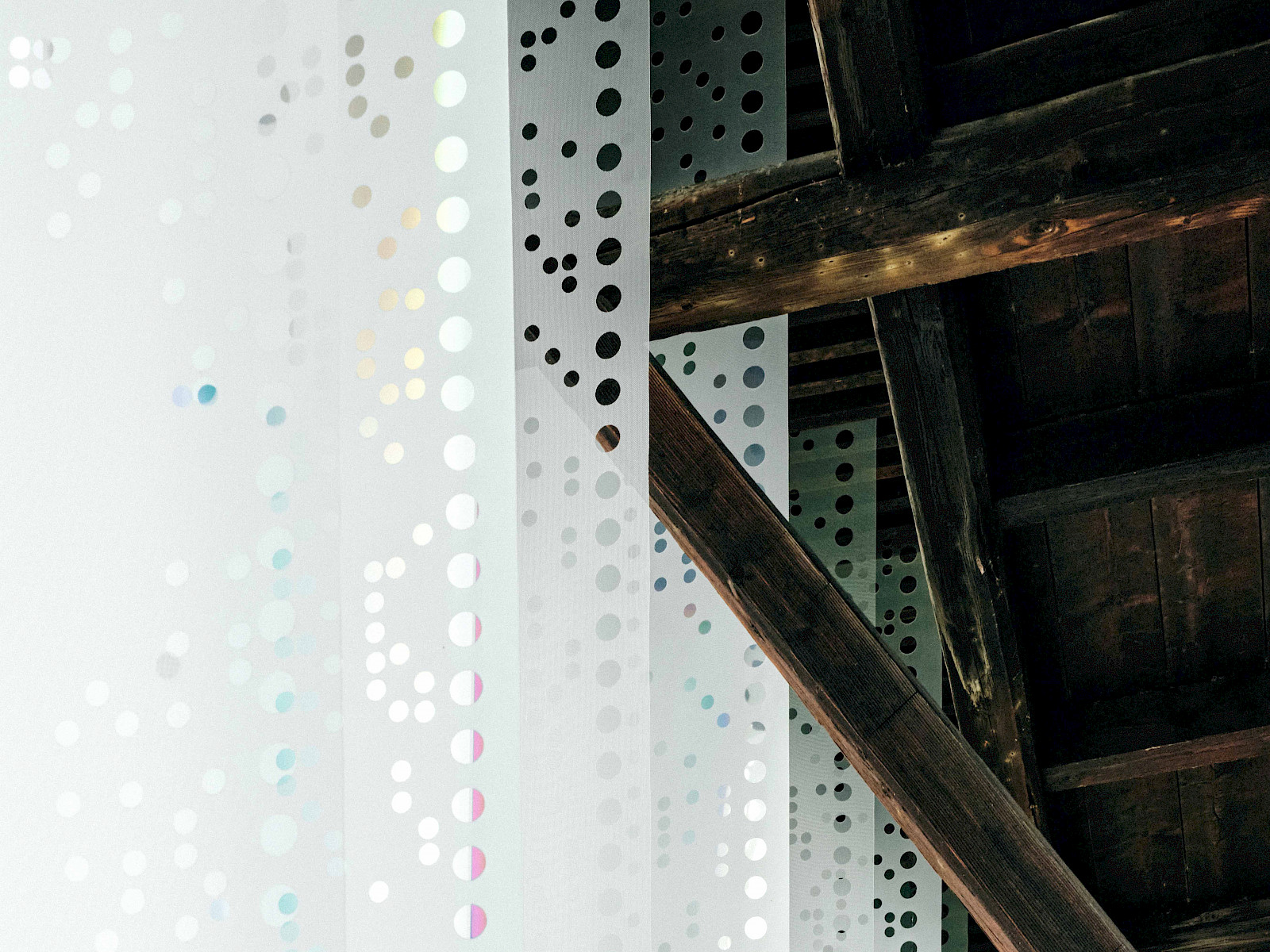
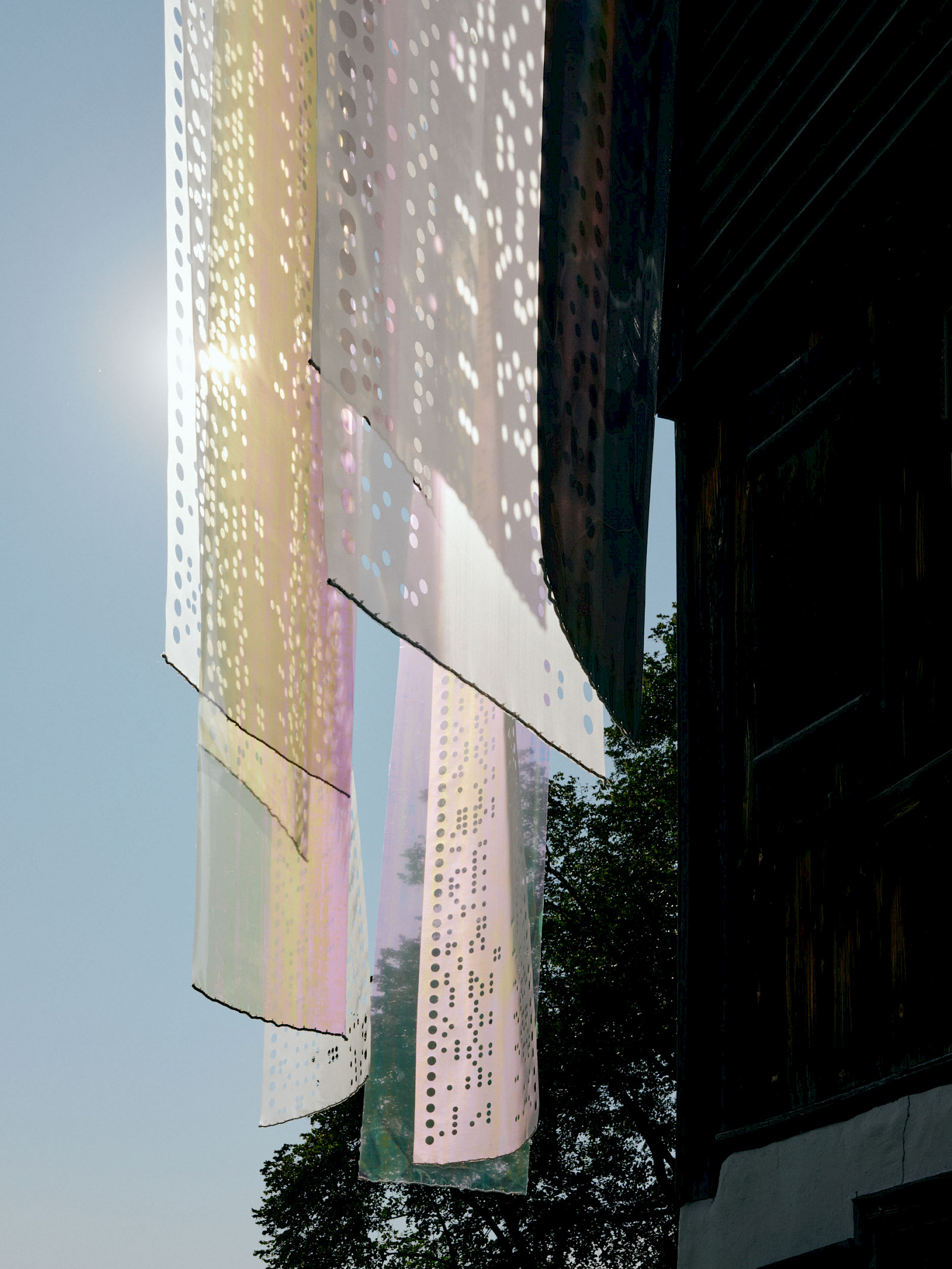
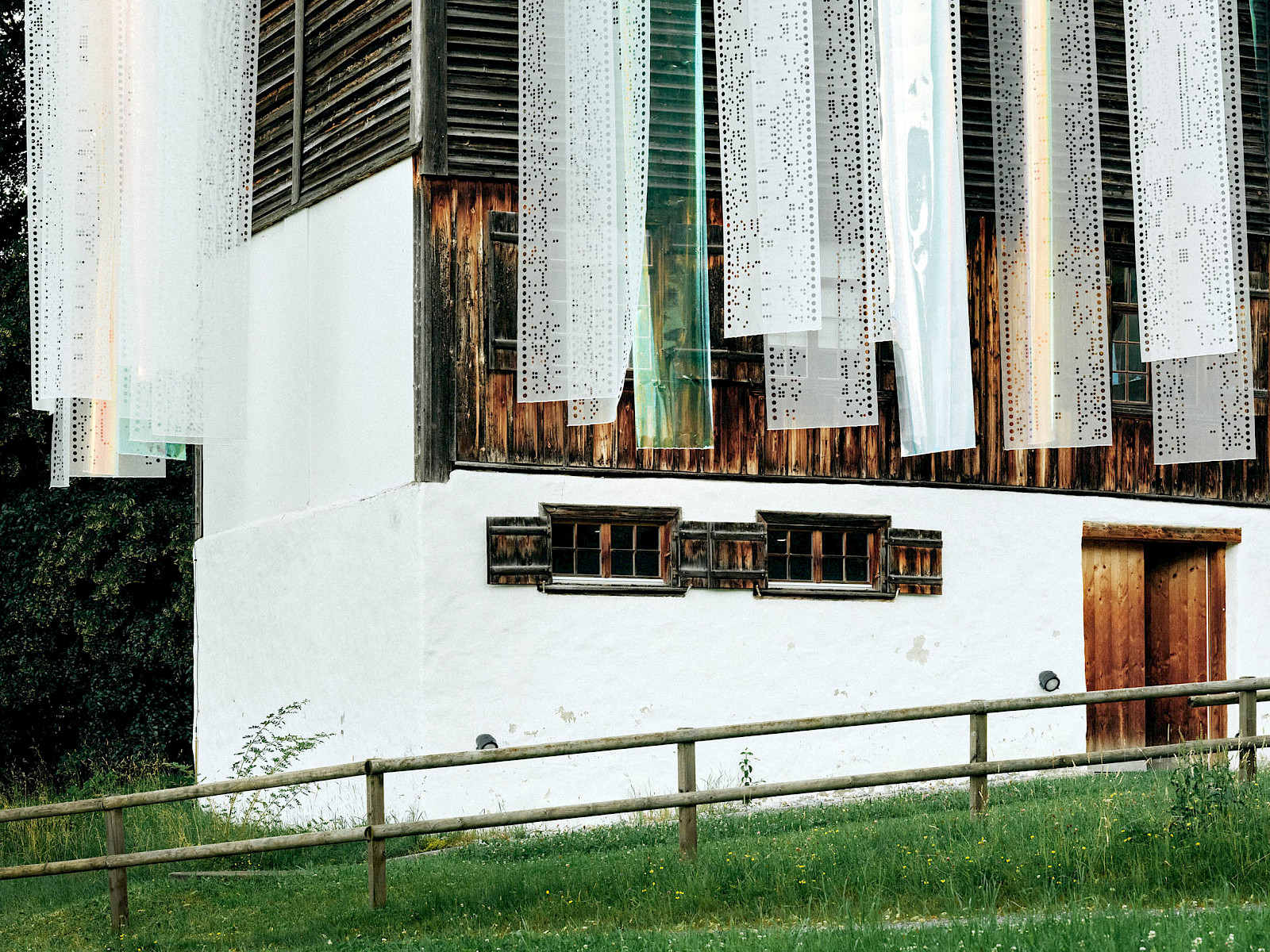
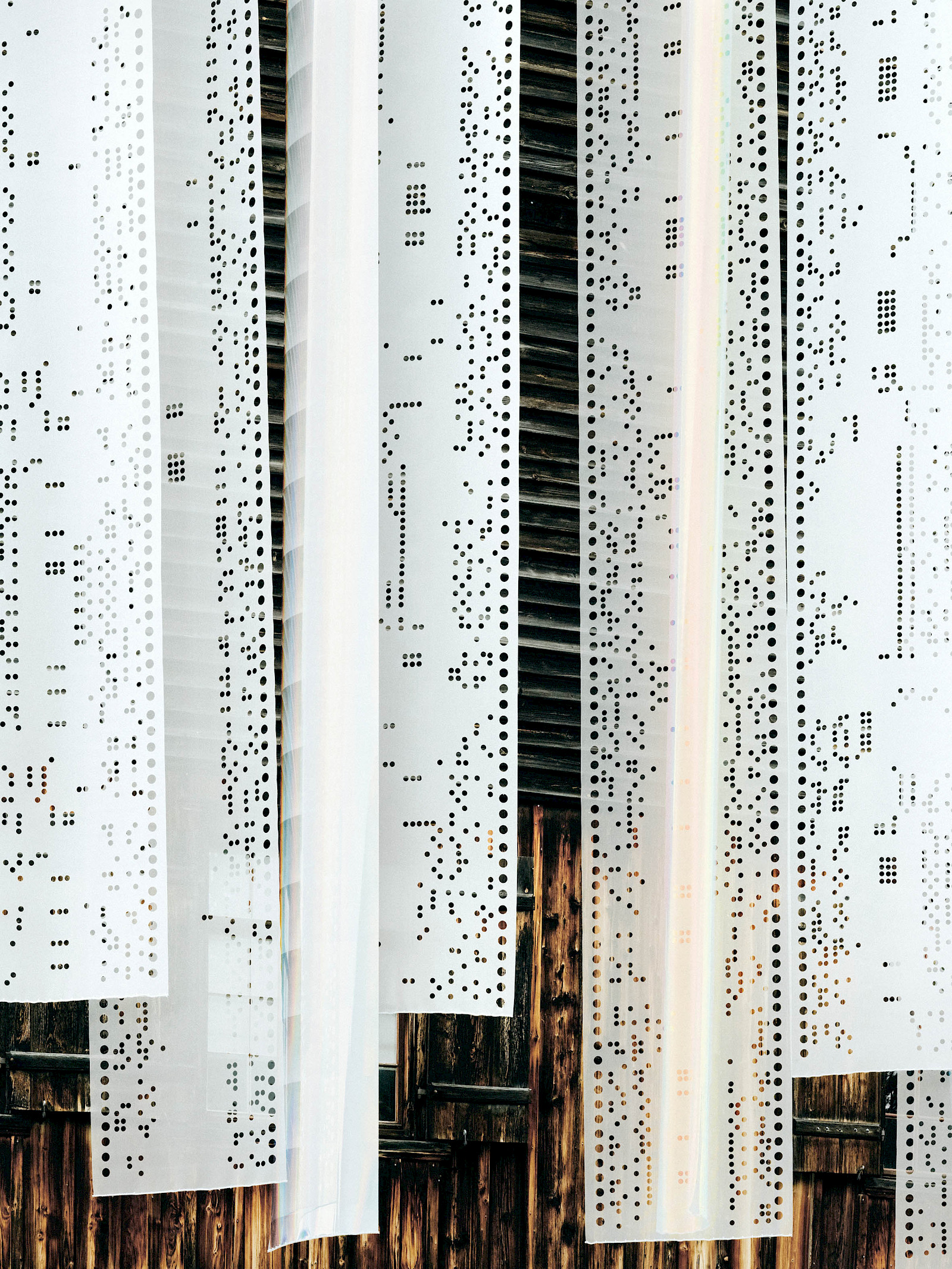
A punch card is a piece of stiff paper that contains digital data represented by the presence or absence of holes in predefined positions. What fascinates me about the perforated card is the contrast between the visual language —the code, so to speak—and the end product. I am particularly intrigued by the punch card and punching in embroidery, and the abstraction of the images created by the enlargement. I am interested in both the visually transferred, technical, geometric representation, as well as the steps that are required to achieve the final result.
As a data carrier and a symbol of data processing, the punch card is a predecessor of the computer. What was once a key to success was soon replaced by other keys to success. Like the punch card, the Tröckneturm has also been decommissioned. With my installation, the tower is reinserted into the spotlight; what was once replaced and forgotten is now remembered again.
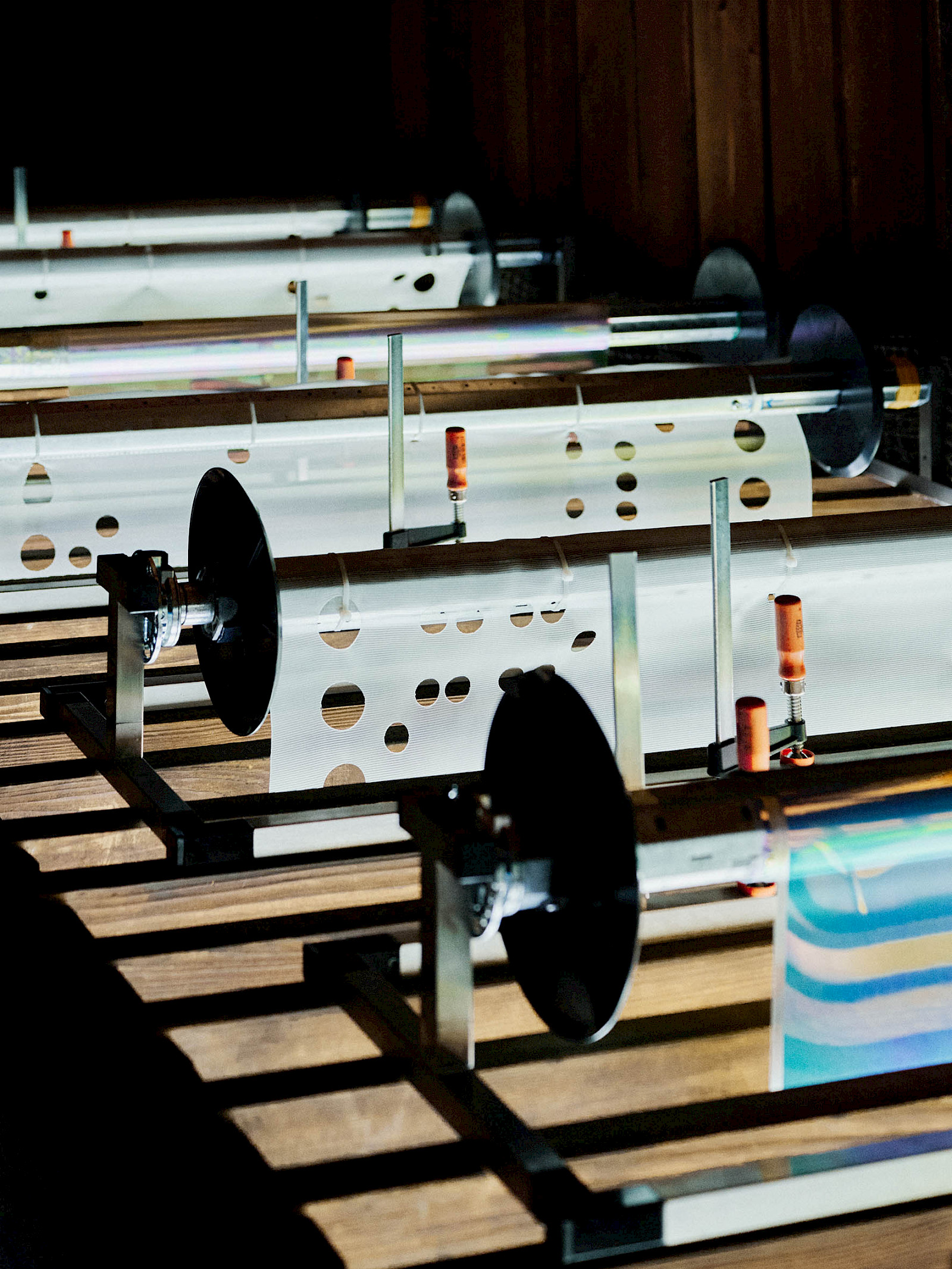
Roll-up system for rolling the fabric back up quickly in case of severe weather change.
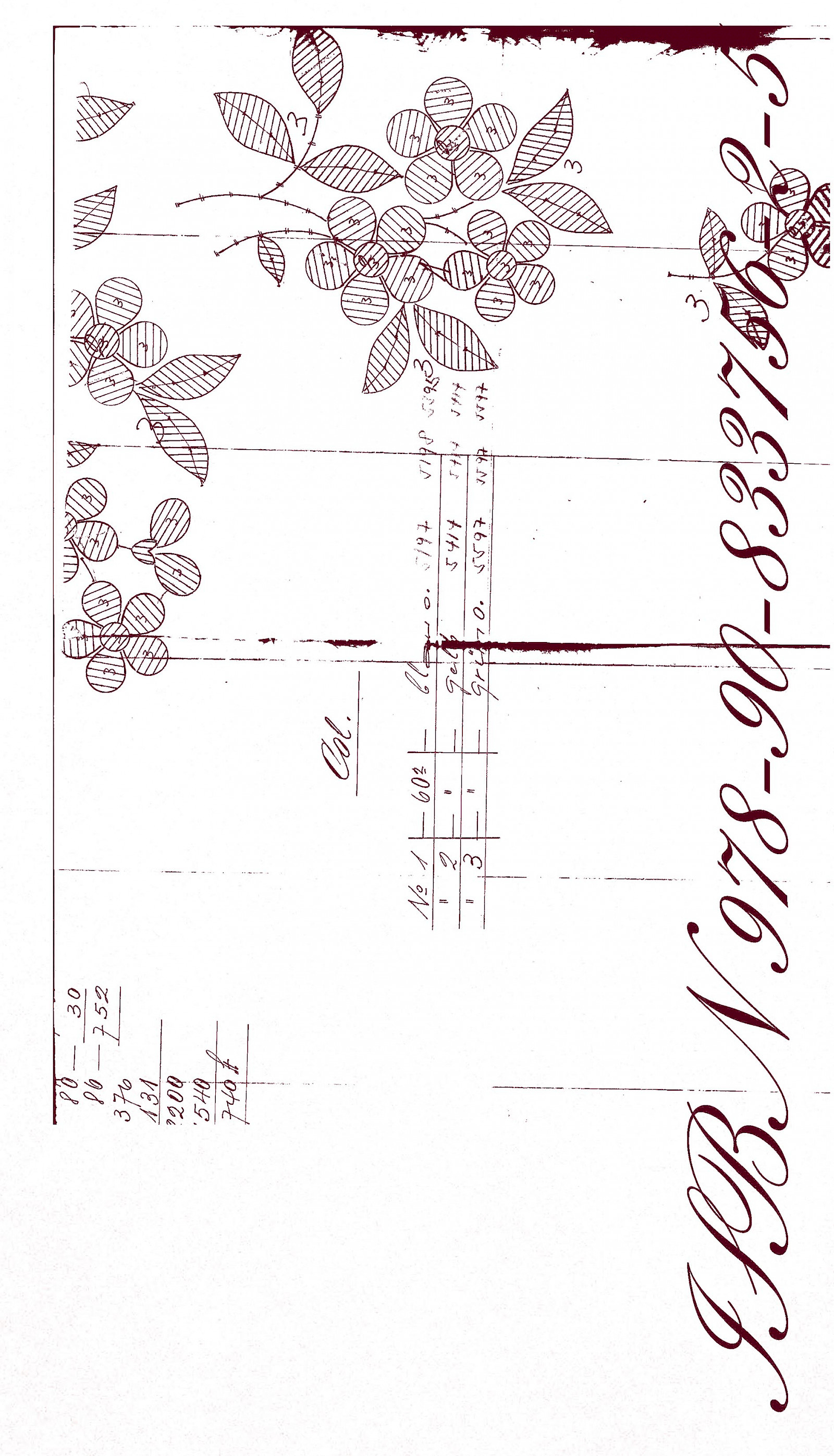
Technical drawing of the Forget Me Not handkachief with ISBN Nr. of the book Forget Me Not
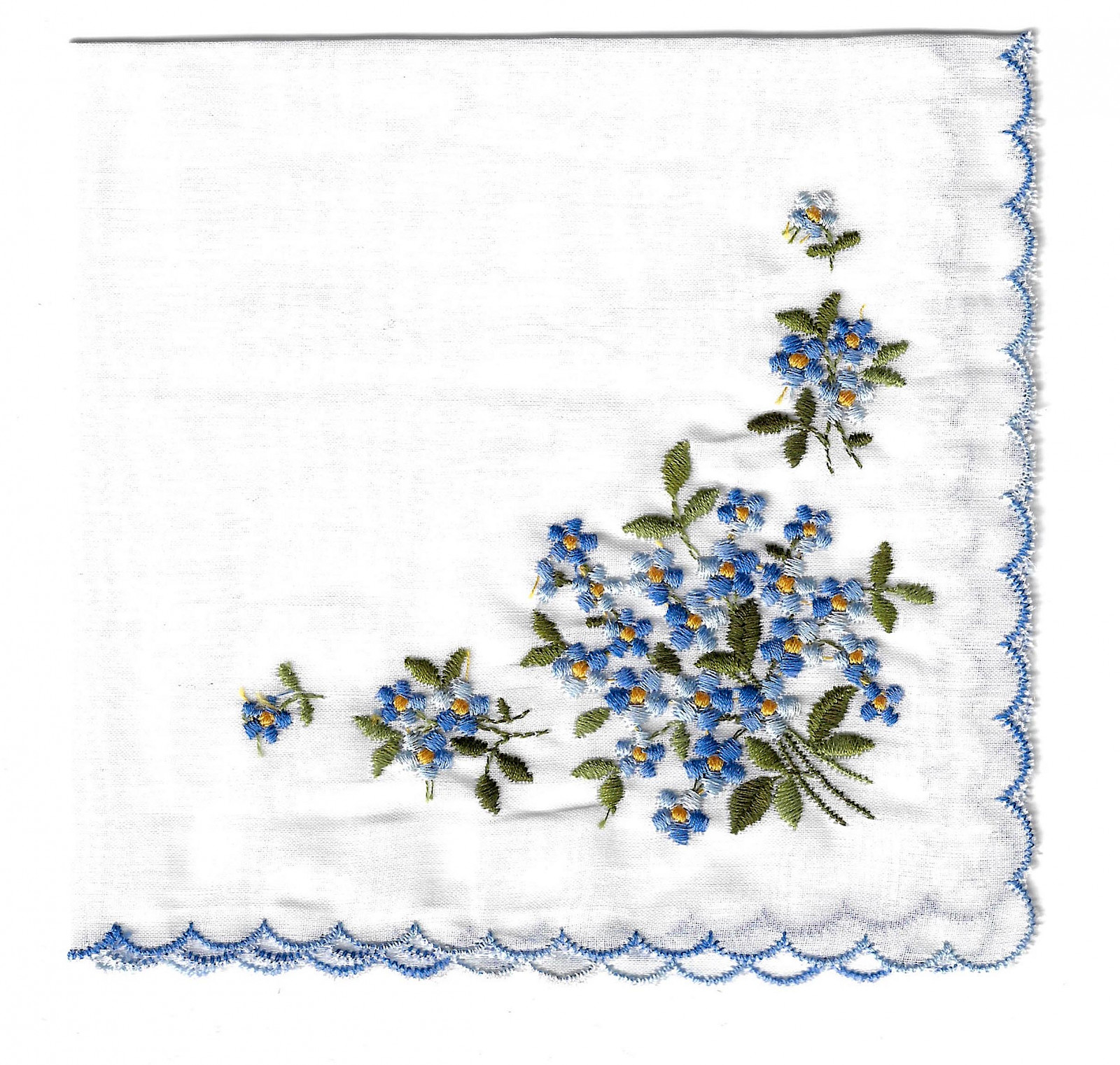
Forget-me-not handkerchief, from Fehrlin Textil AG.
Extract from my diary in the book:
3740 stitches = 37.4 metres of punch card (100 stitches = 1 metre of punch card) Vergissmeinnicht is German for ‘forget-me-not’
Having decided to lasercut punch-card holes into the fabric panels for the installation, I now need to choose a motif. When I ask Daniel Rüdlinger for advice, he suggests the forget-me-not. His grandfather used to embroider handkerchiefs with this flower, and he currently has the motif installed on his machine as part of his last production for the company Fehrlin, founded in 1895, that resells Swiss souvenirs. I decide to use the forget-me-not for the installation; symbolically it makes sense. I see Daniel to scan the roll to create the laser files. By enlarging the card to a fabric width of 100 cm, I will change its dimension and create a poetic interplay of images and light.
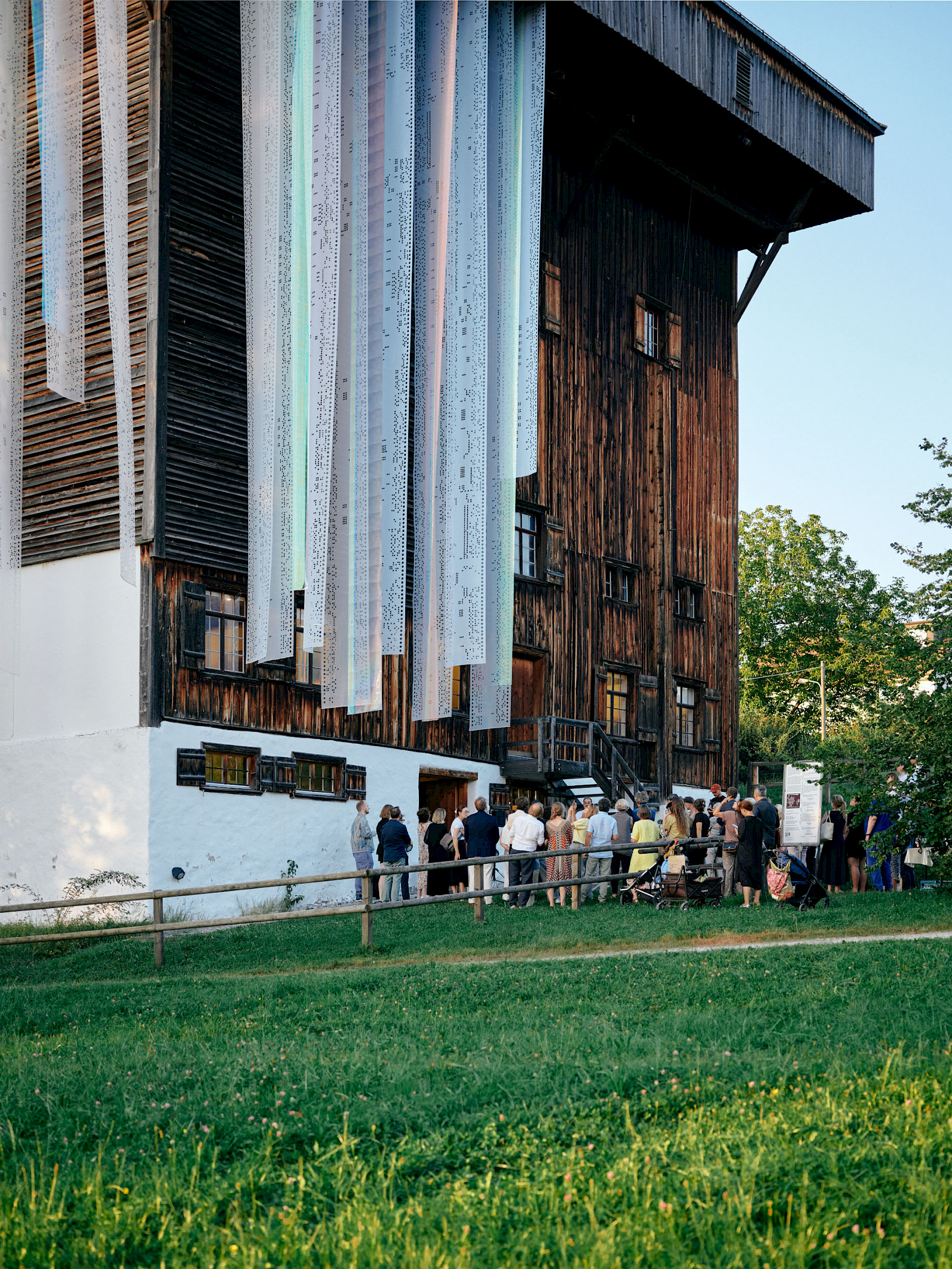
Opening 23. August 2024
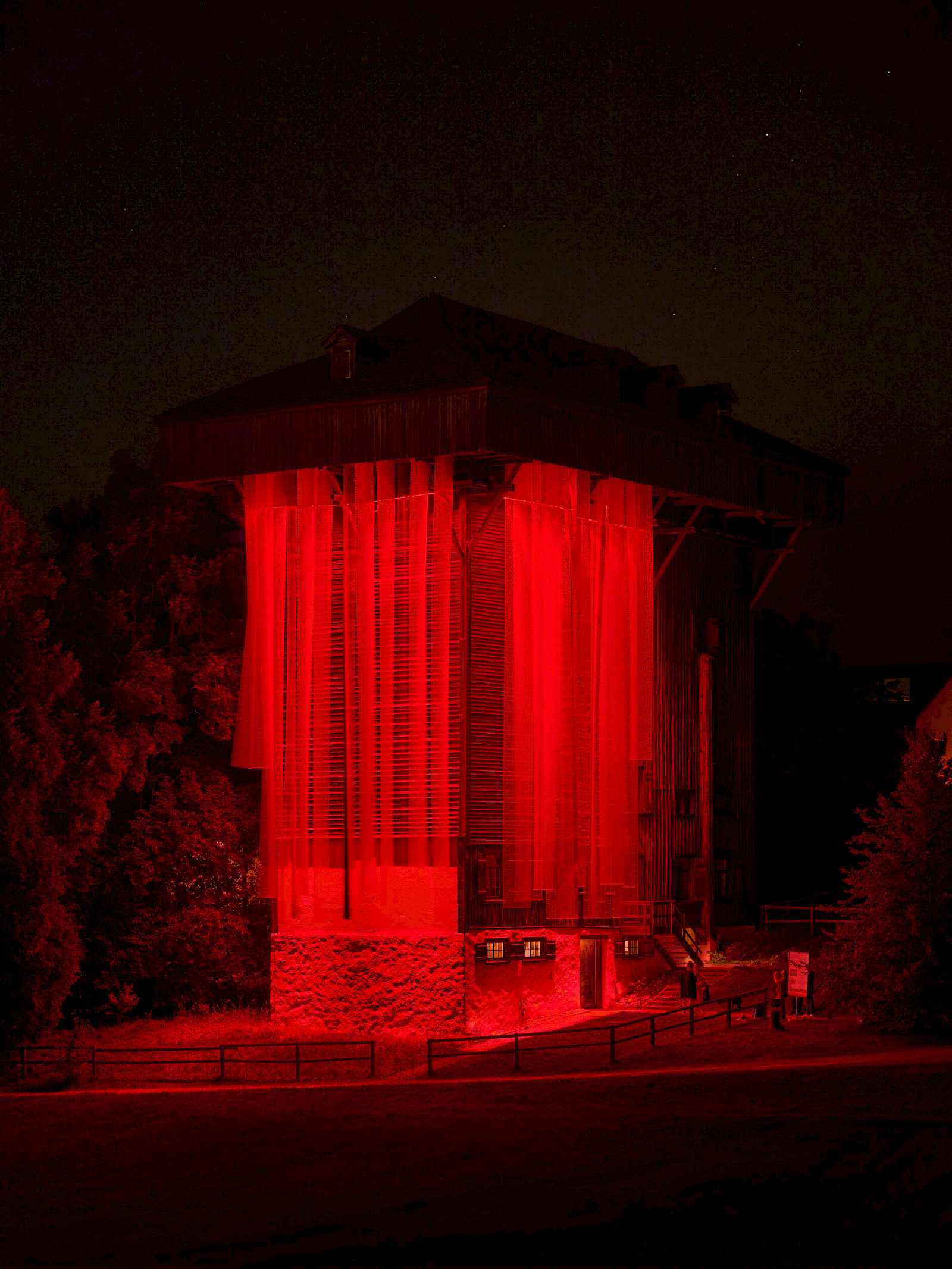
Film Forget Me Not, 2024
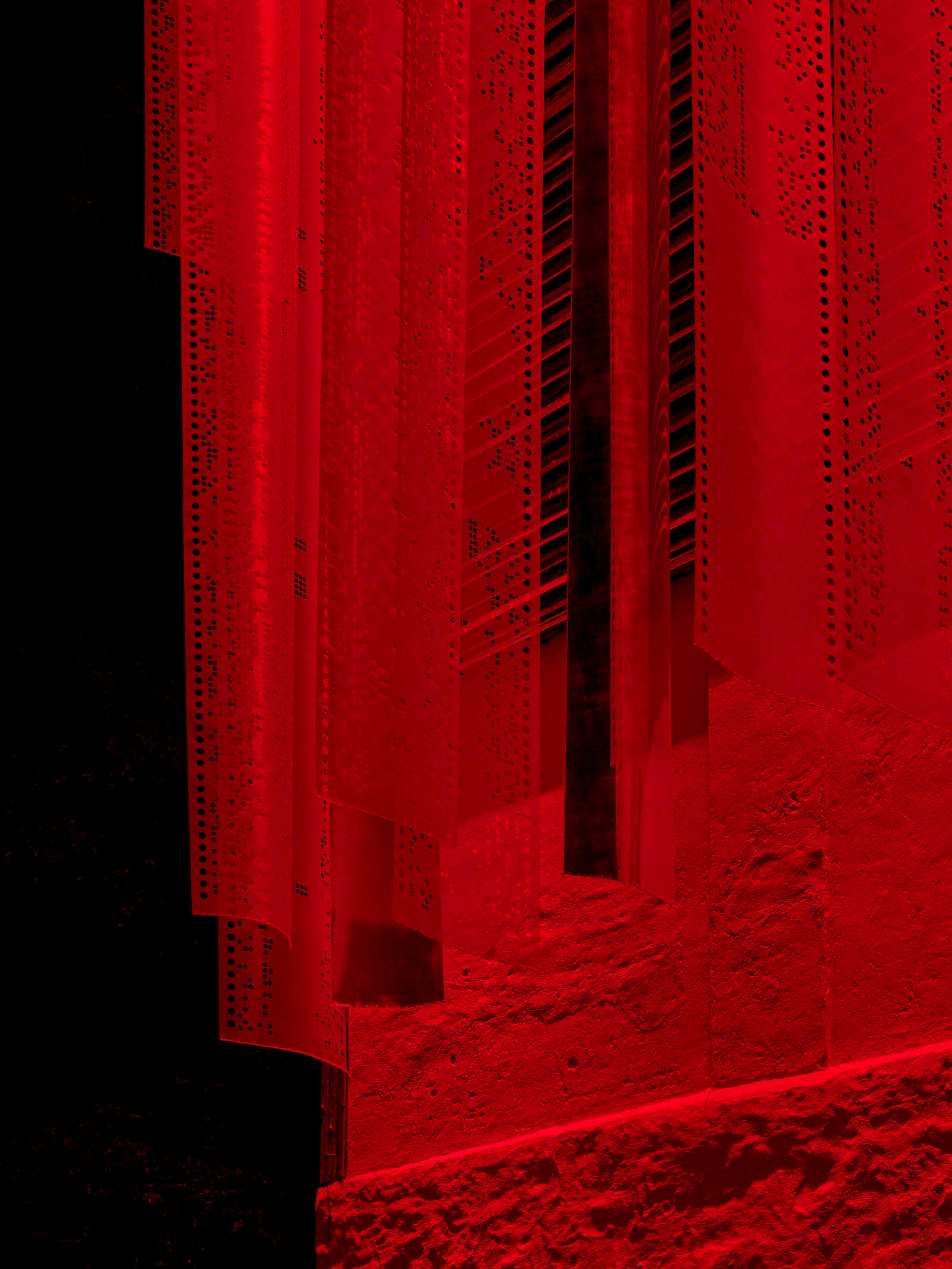
FORGET ME NOT, 2024
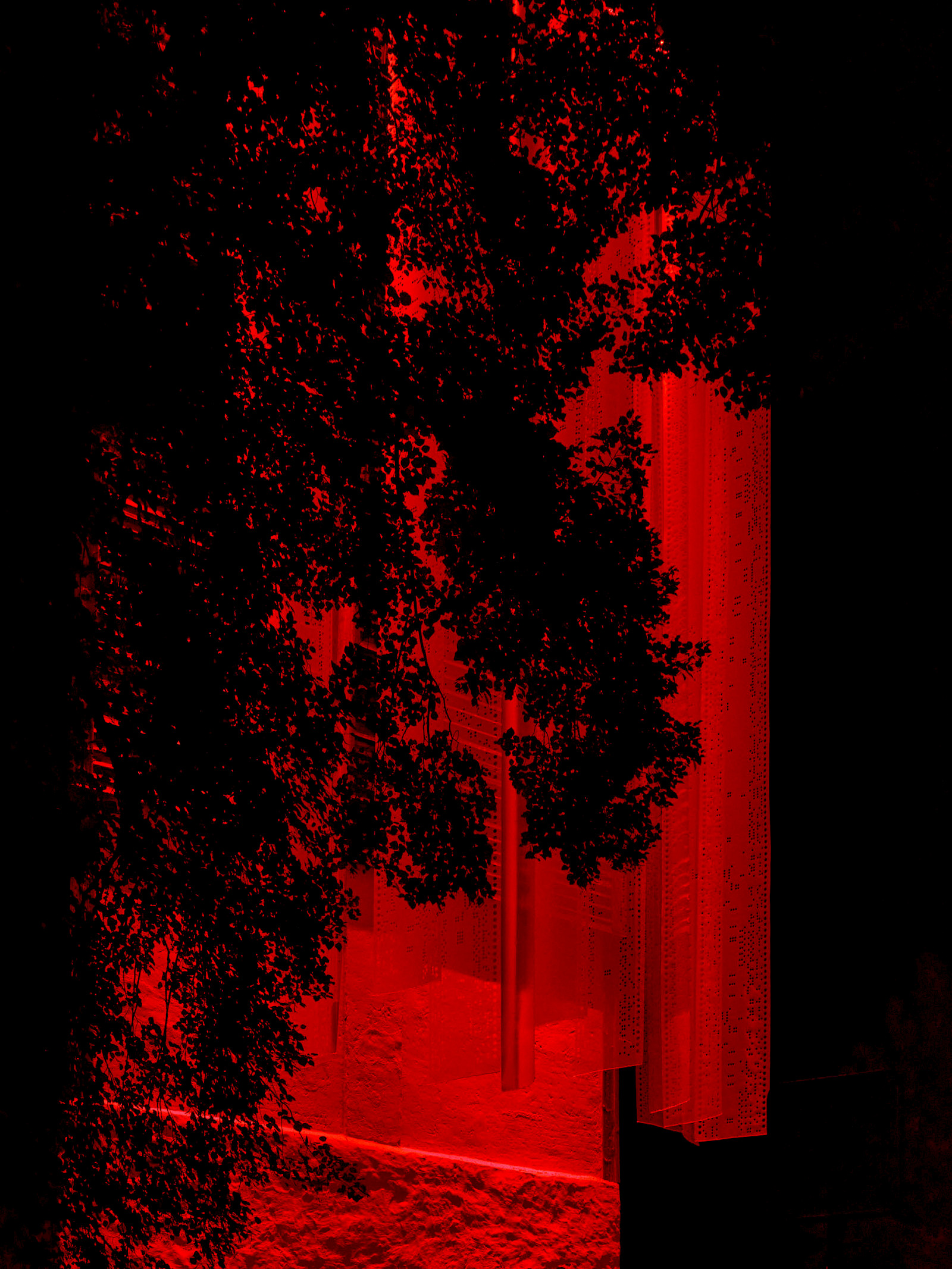
BOOK FoRget Me Not / Vergissmeinnicht
The project is accompanied by a book Forget Me Not / Vergissmeinnicht in collaboration with graphic designer Rudy Guedj and Building Fictions(BF) publisher based in Amsterdam (NL). The main intention of the publication is to document the last drying towers still standing in Switzerland as a way to archive and monumentalize those structures as the witnesses of an industry in constant development.
The red thread for the design of the publication is literally red – Turkish red – as this was often the color of the textiles dyed and hung on the towers. St. Gallen-based photographer Ladina Bischof specialises in architectural photography. I commissioned her to photograph all remaining hanging and drying towers in Switzerland.
The publication combines different voices and perspectives. As well as sharing my own writing, I have commissioned texts from Amsterdam-based historian Andreas Zangger, who focuses on the global threads of textiles in Eastern Switzerland, and Michael Gnehm, a research associate and art historian with a specialisation on Gottfried Semper’s complex approach to architecture, who will contribute a text in relation to architecture.
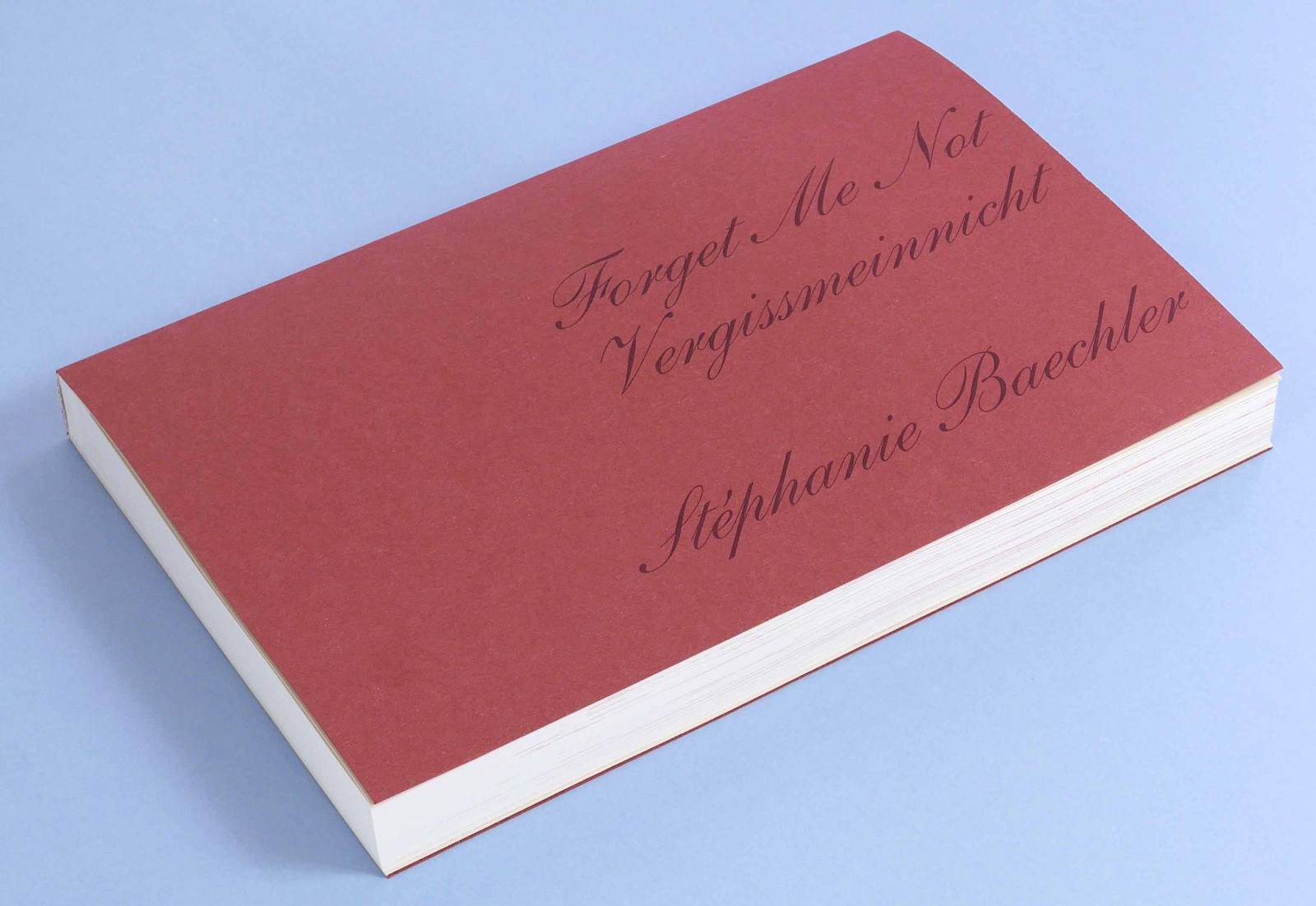
Book Forget Me Not / Vergissmeinnicht
THE RED DYES “Turkish red”
The fabric that was dyed and hung on the towers was often red. The specific, so-called Turkey red—which became emblematic of the region’s textile production—is one of the most researched colours in the history of textile. Producing Turkey red is laborious and requires many steps; this type of dyeing would have taken twenty-six working days in the past. Sourced from madder roots, the vibrant tone was first developed in India before being brought to Greece, Turkey, and the rest of Europe. Its history means that this colour is often seen as one of the first examples of globalisation. I was never keen on the colour red, and it is almost difficult for me to use it for the design of this book, but somehow it feels like the right choice.
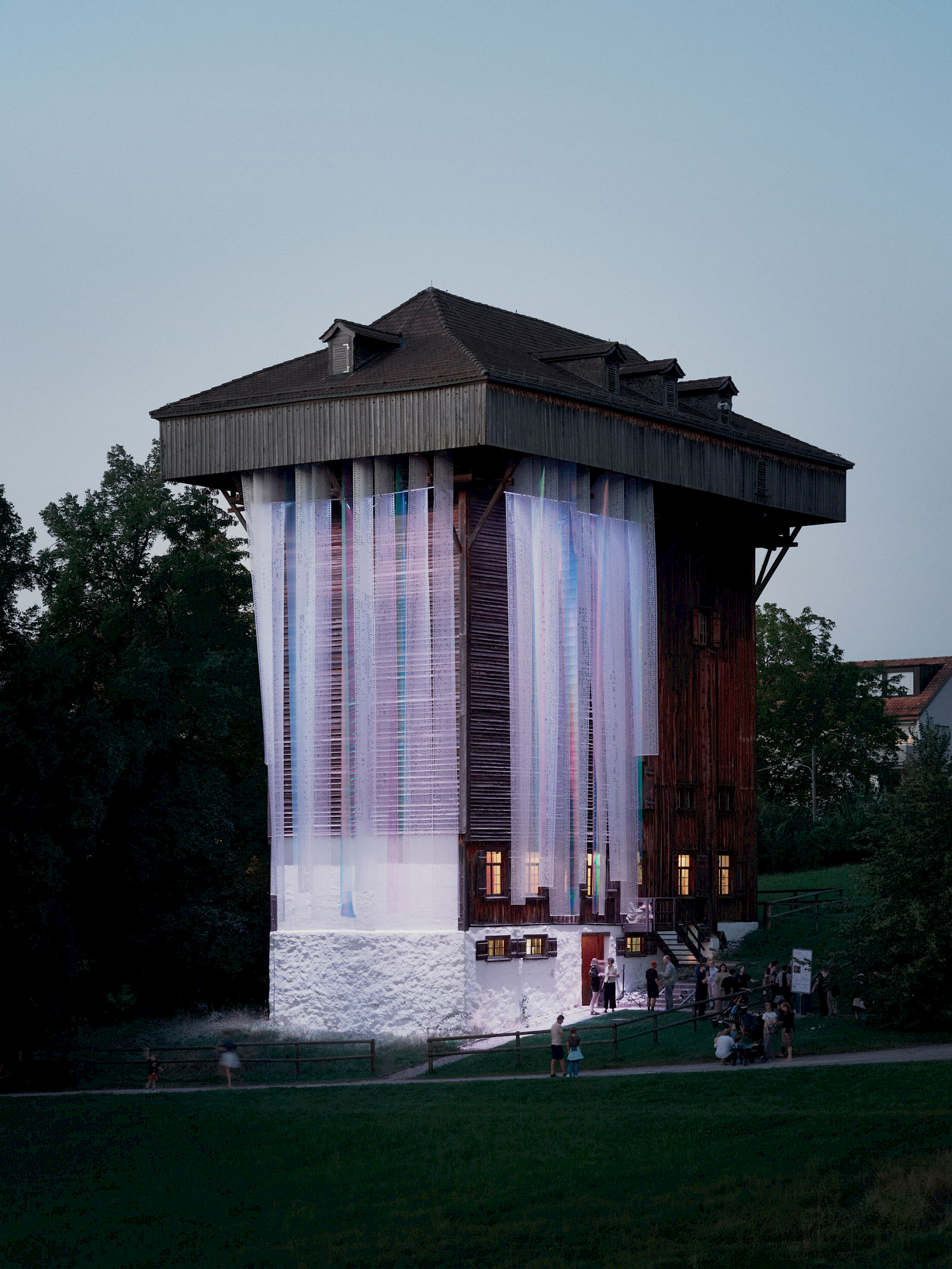
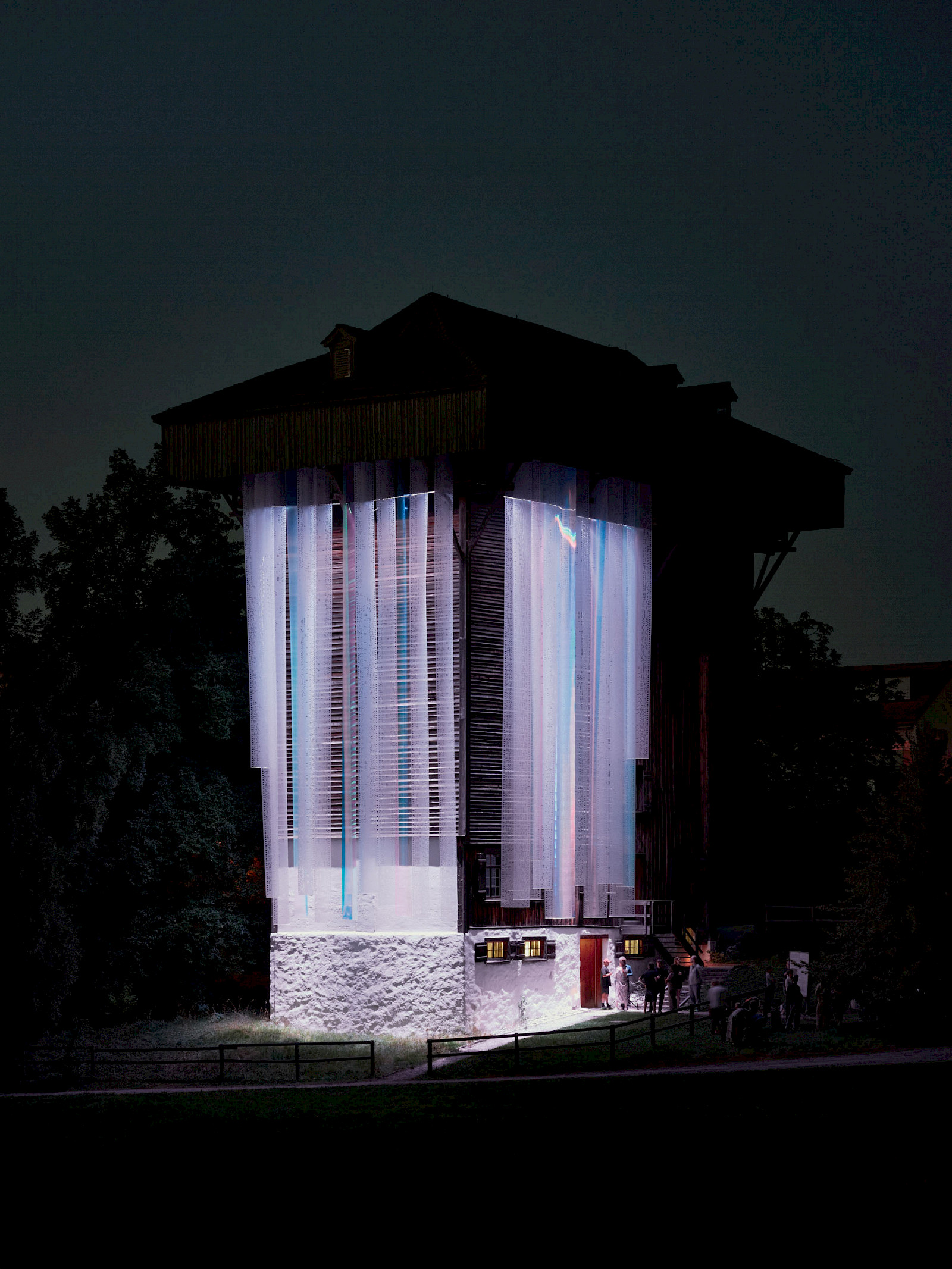
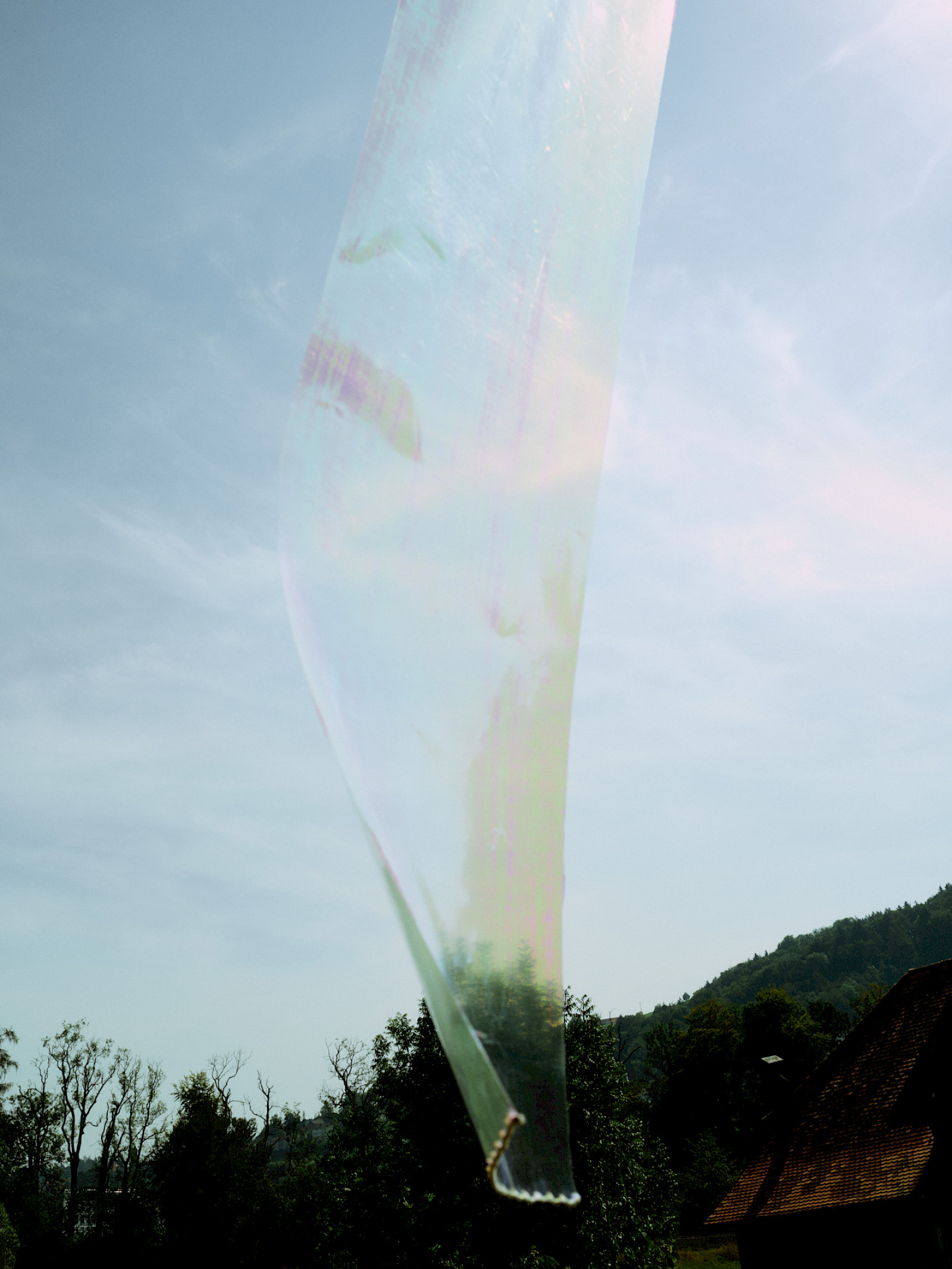
POETICS OF DRYING - ARTISTIC PRACTICES AT TRÖCKNETURM ST. GALLEN
Lectures and Discussions, curated by Stéphanie Baechler Saturday 31 August 2024
In collaboration with Kunst Halle Sankt Gallen and TaDA - Textile and Design Alliance.
When we think of textile production, we often think of designing, dyeing, weaving, and embroidering, but rarely do we think of drying, even though it is an equally important part of the process. Forget Me Not deals with drying as a central aspect of the textile industry, as seen throughout the Eastern Swiss landscape. During the conference day, the history of the Tröckneturm St. Gallen, a remnant of the region’s centuries-old textile industry, was revitalised through the different perspectives of experts from the fields of architecture, history, and culture.
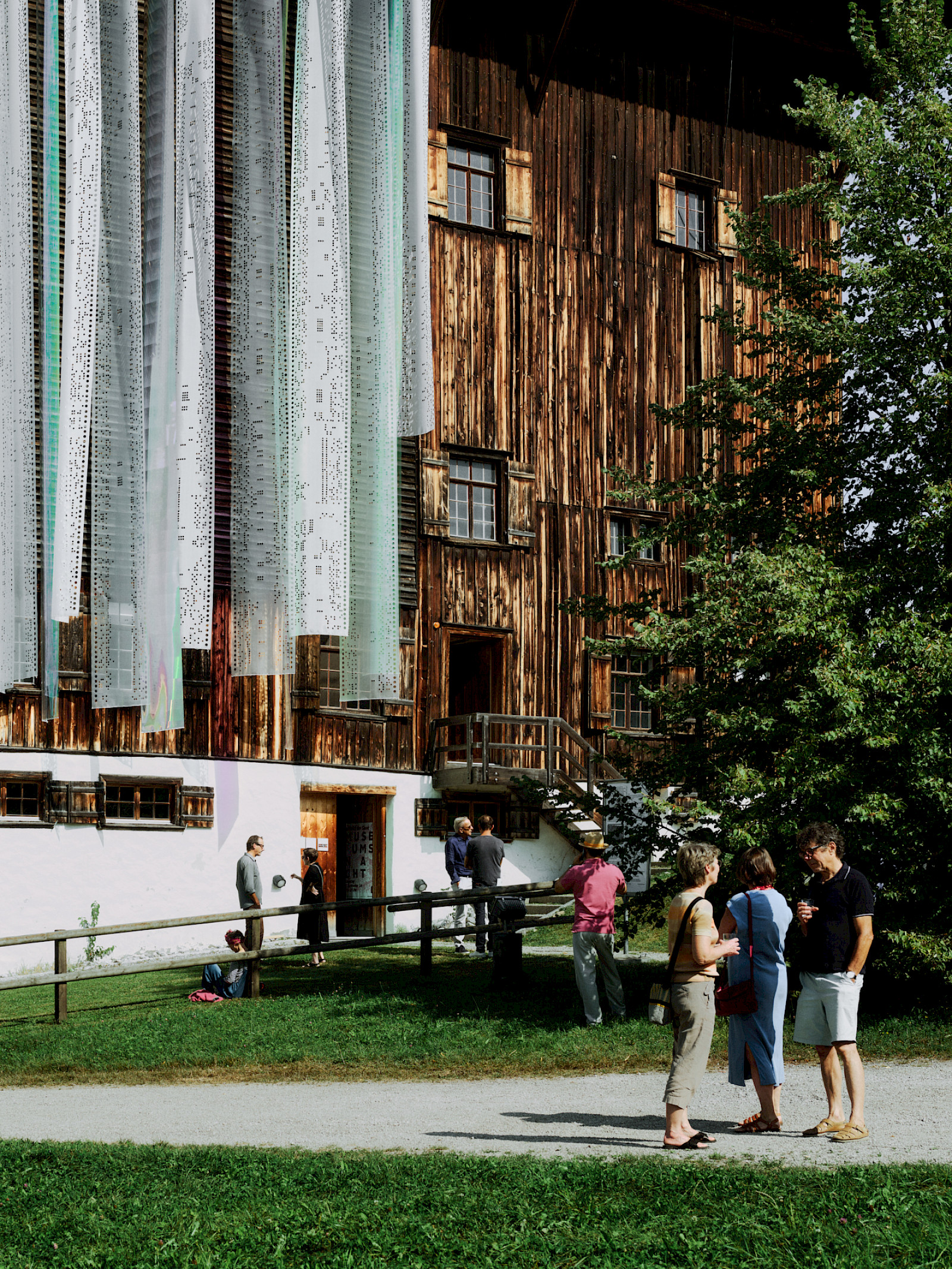
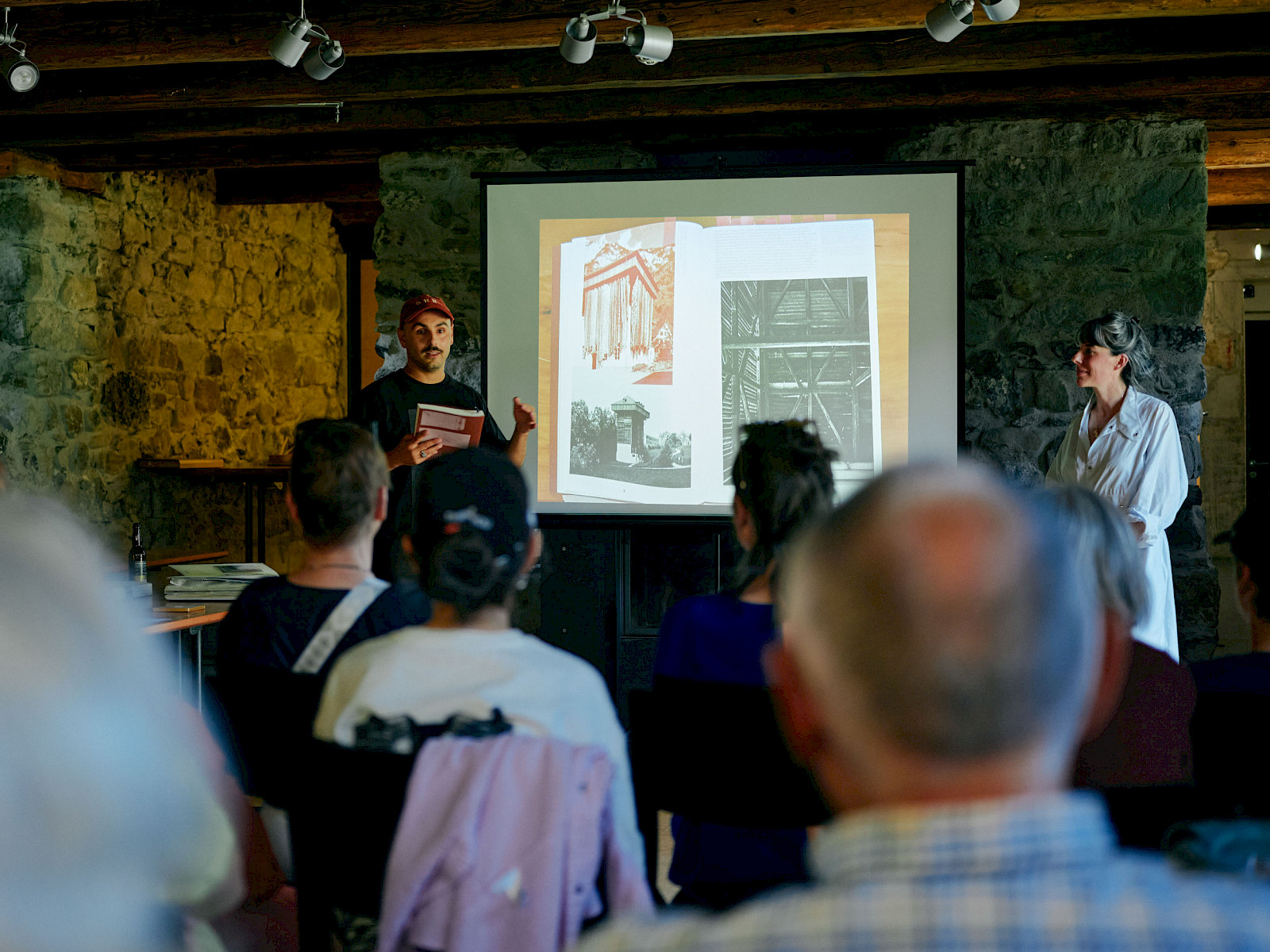
Book launch in the Tröckneturm with Rudy Guedj from Building Fictions
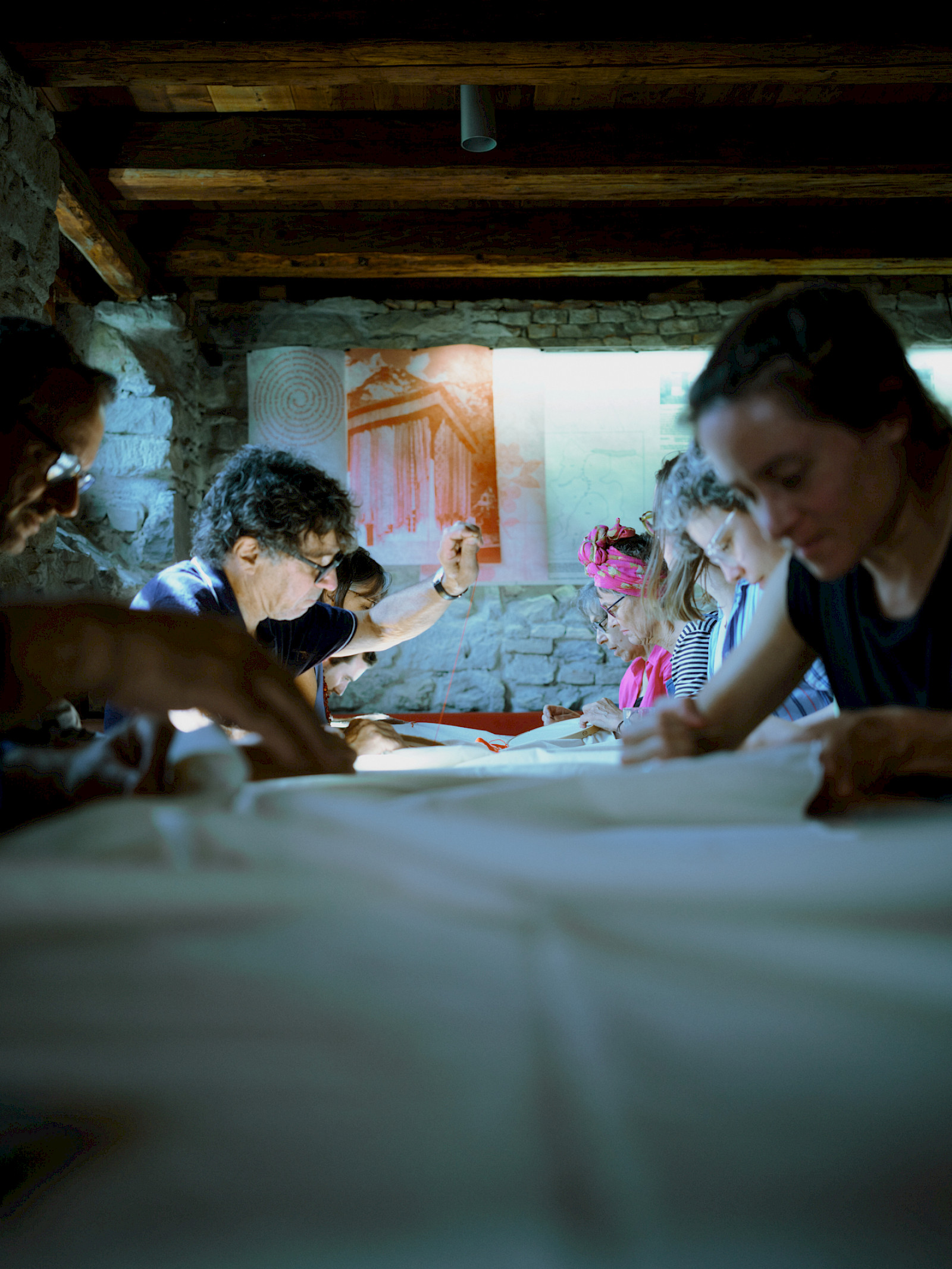
Lectures and Discussions Curated by Stéphanie Baechler Saturday 31 August 2024
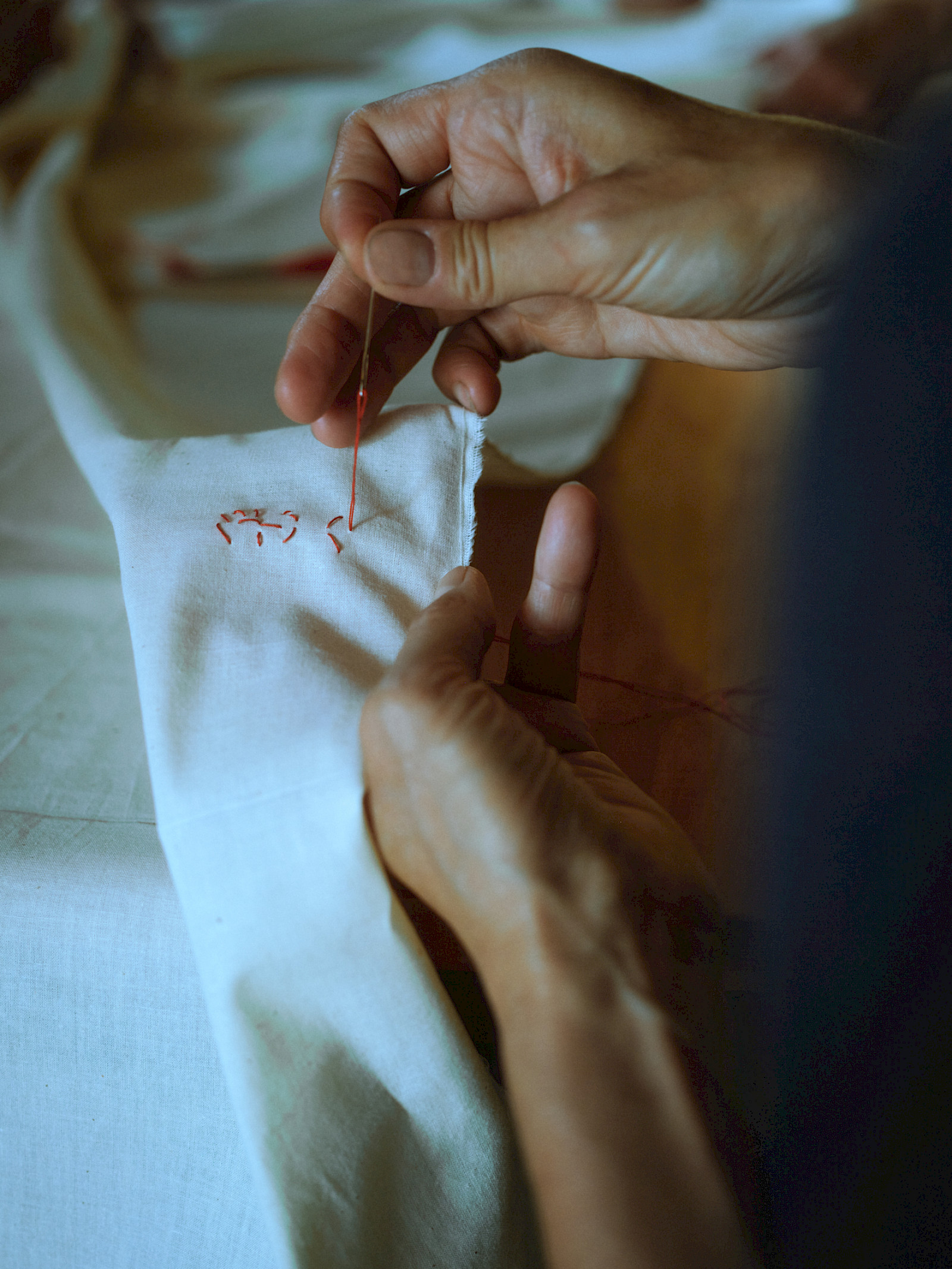
To capture the traces of the day, there was a joint embroidery experience with a short introduction by Josy Kriemler
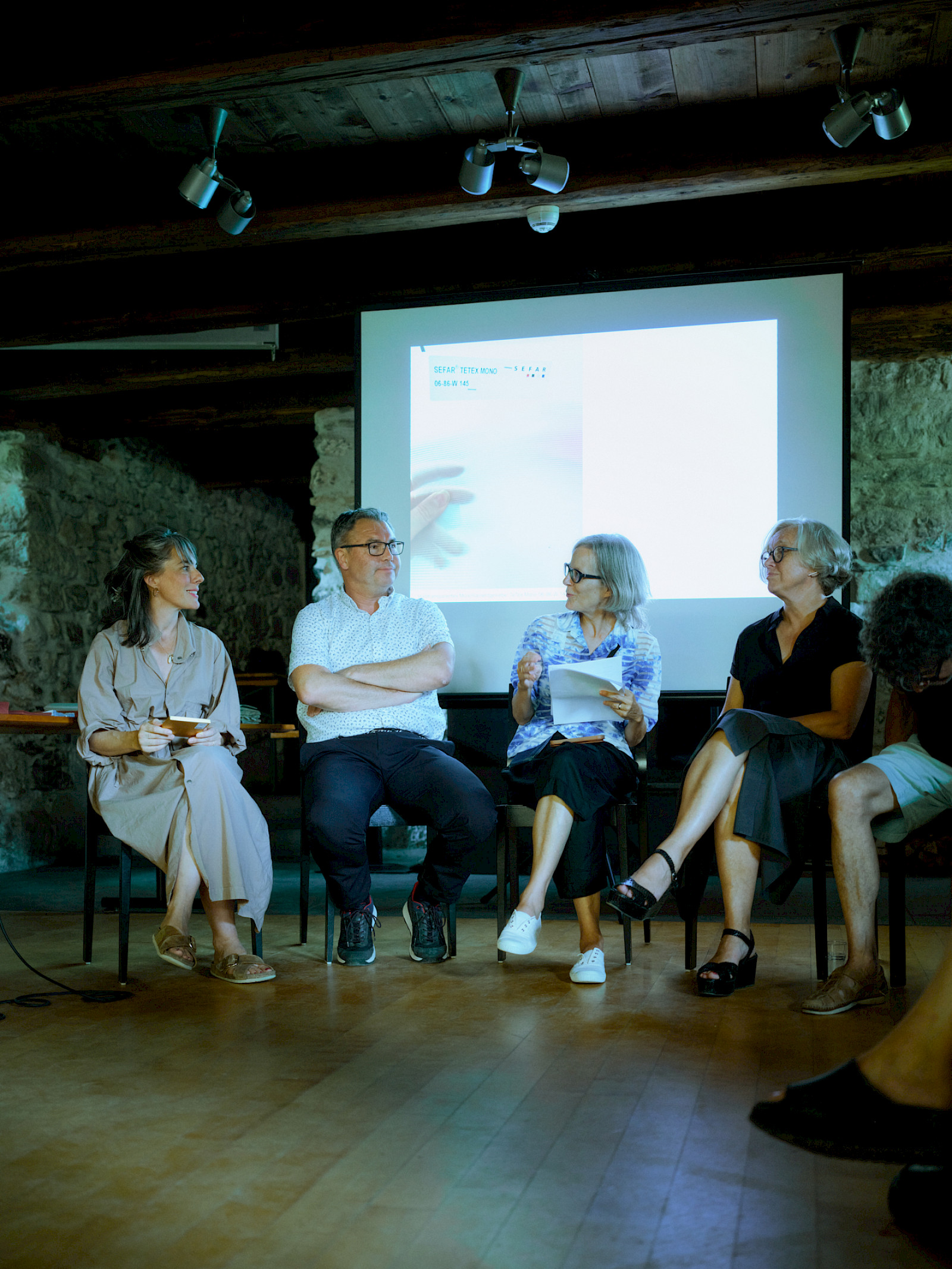
TaDA Talk with Textile and Design Alliance. Lokale Produktion, Tradition und Innovation Brigitte Signer – Designerin, Création Baumann AG Daniel Rüdlinger – Lohnsticker Samuel Wagner – Leiter Architektur & Verkauf Siebdruck, Sefar AG Stéphanie Baechler
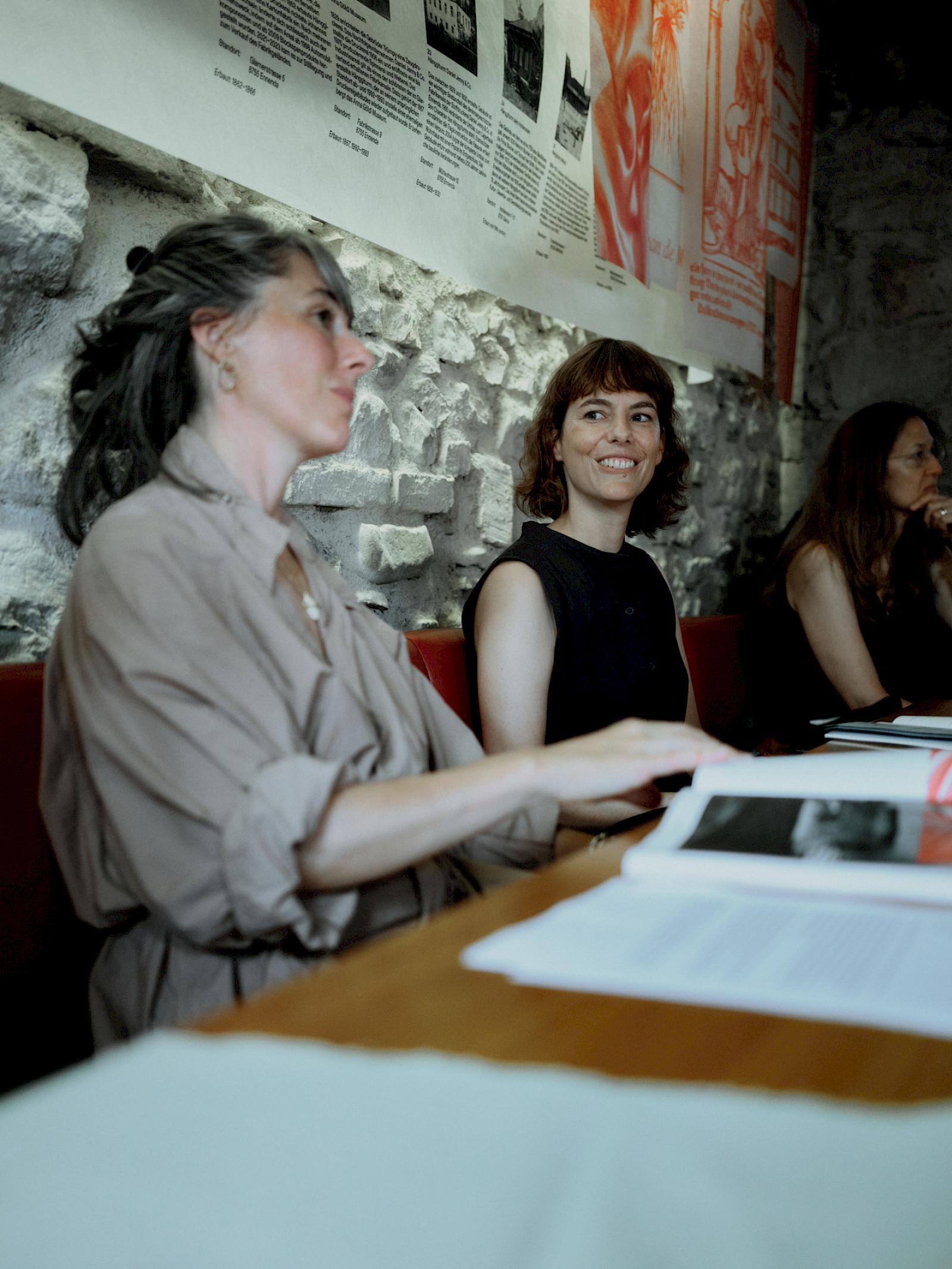
STORY BEHIND Discussion: Artist Stéphanie Baechler with Photographer Ladina Bischof Insight into the artistic research and working process
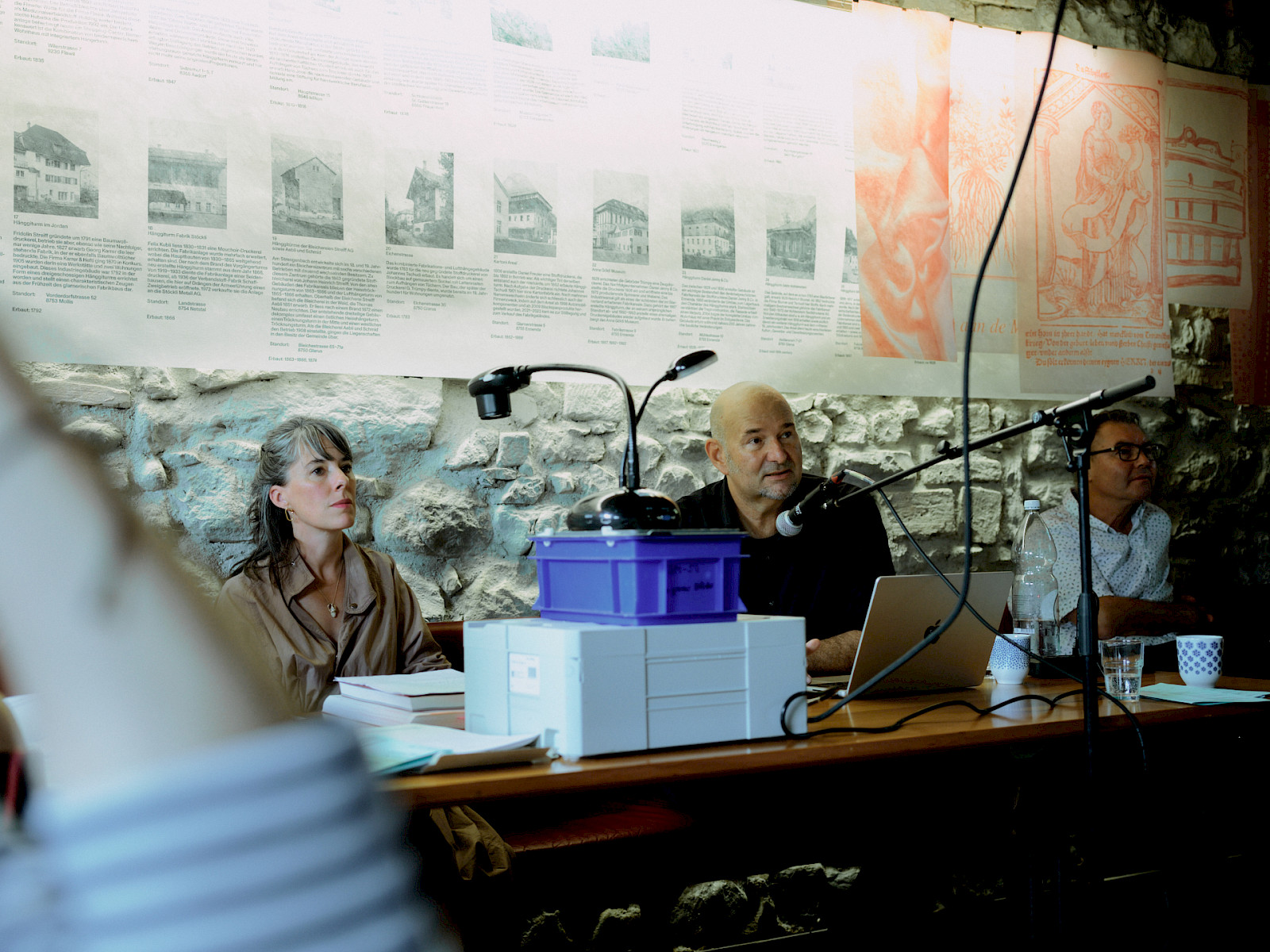
Lecture: Architect Roger Boltshauser Q&A: Stéphanie Baechler (Dear Clay,) Lecture on rammed earth construction, tradition, and potential; conversation exploring the relationship between textile and clay
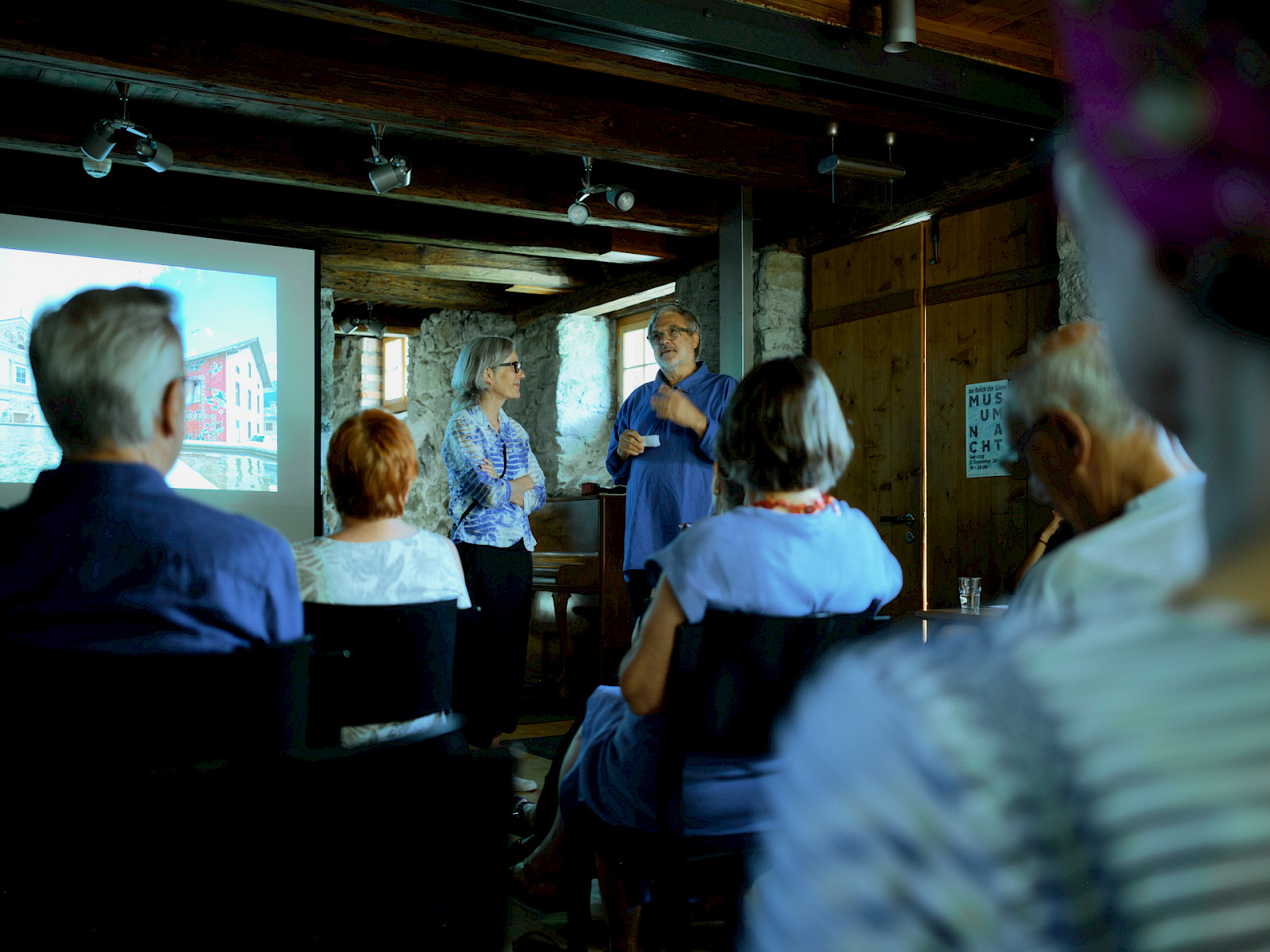
Introduction: Textile designer Martin Leuthold. The Tröckneturm St. Gallen in a historical context
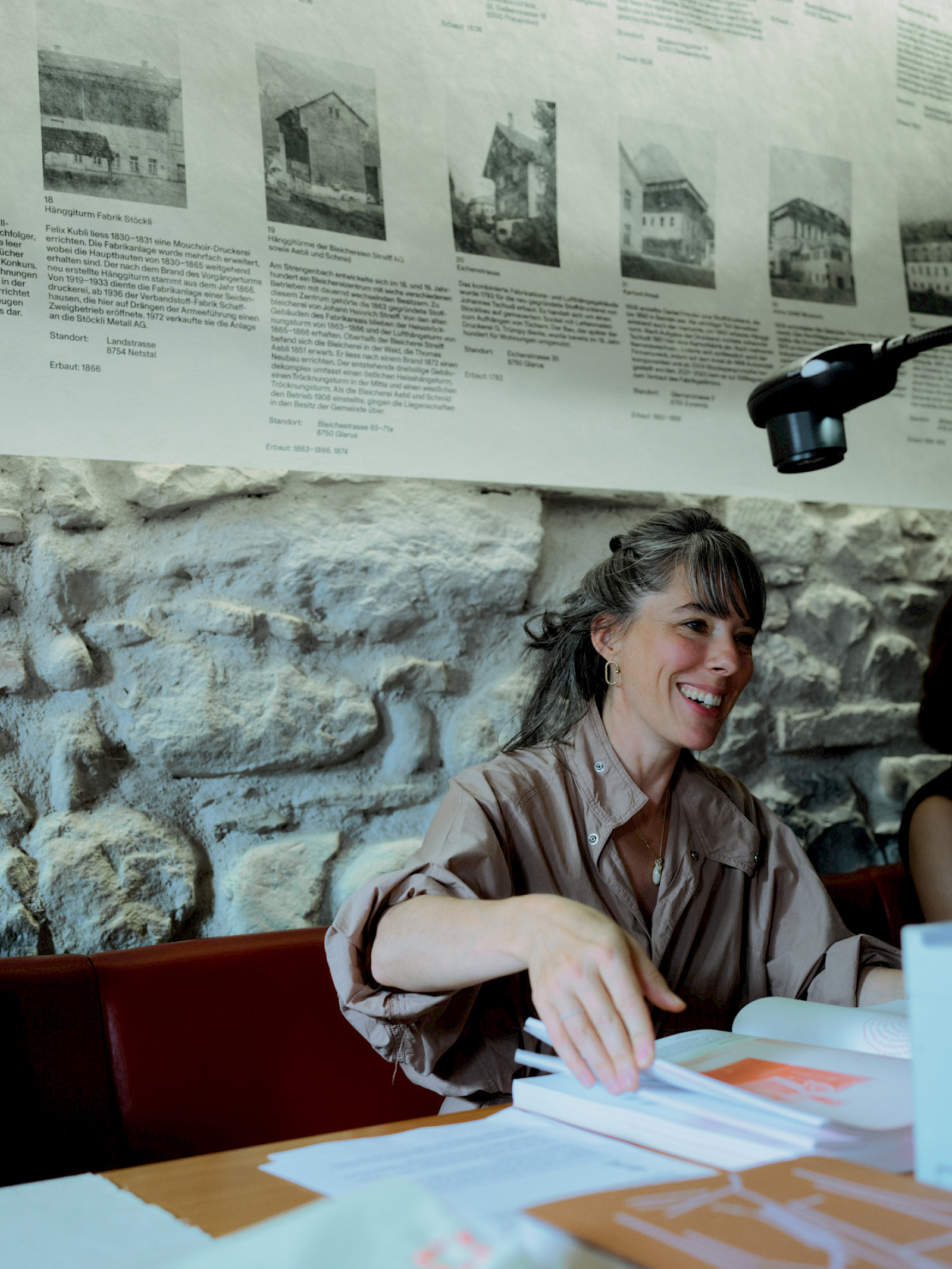
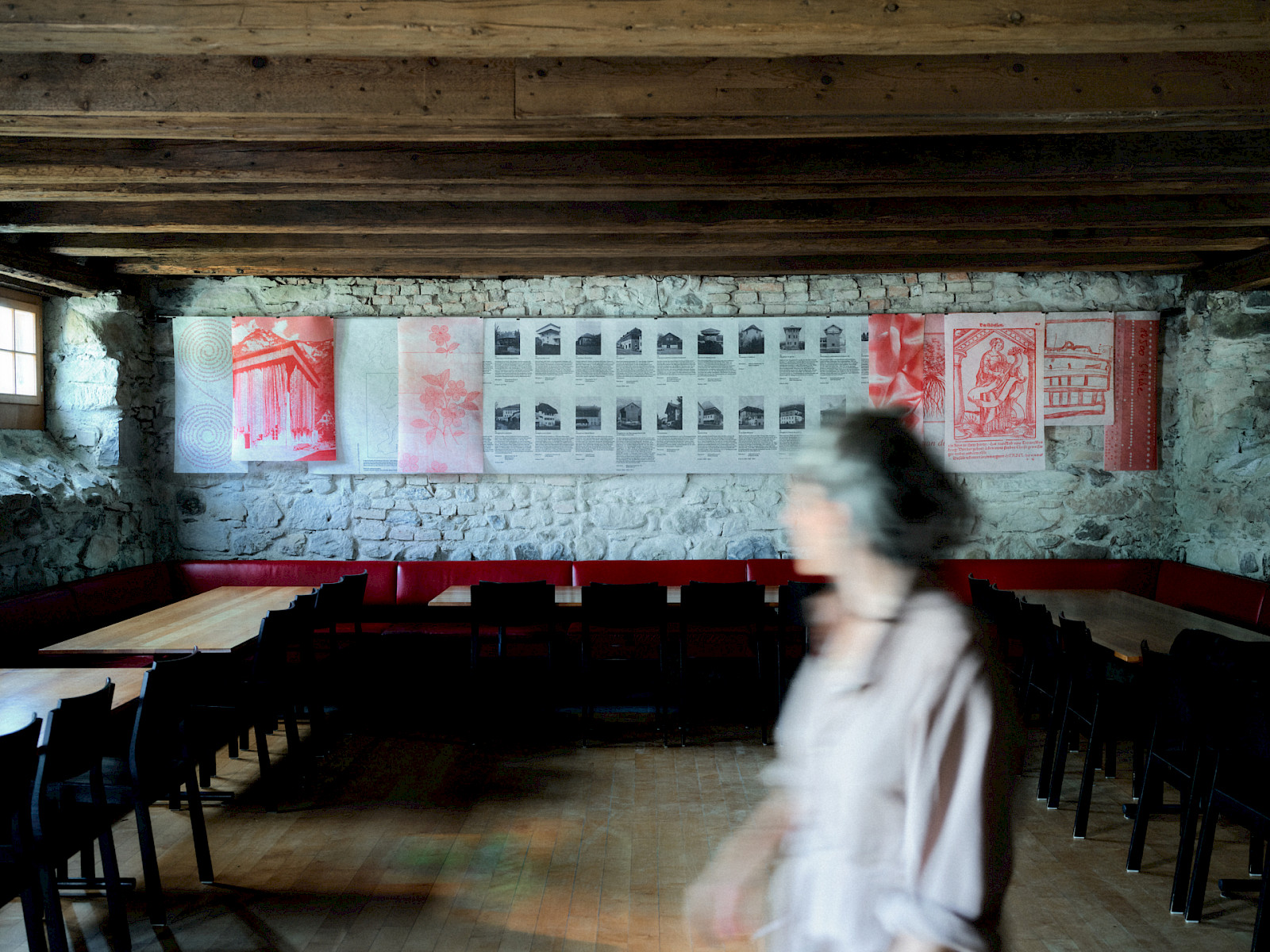
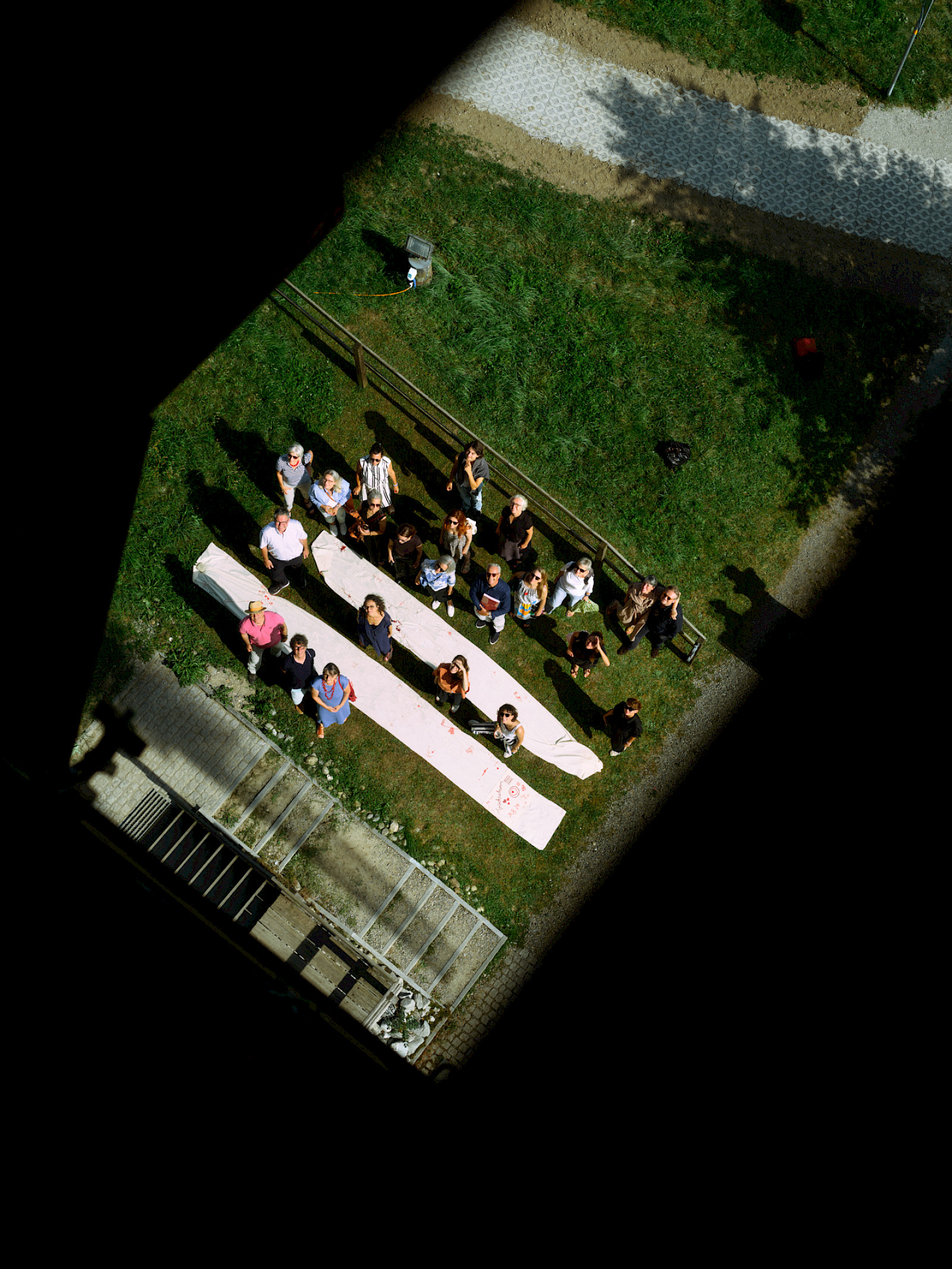
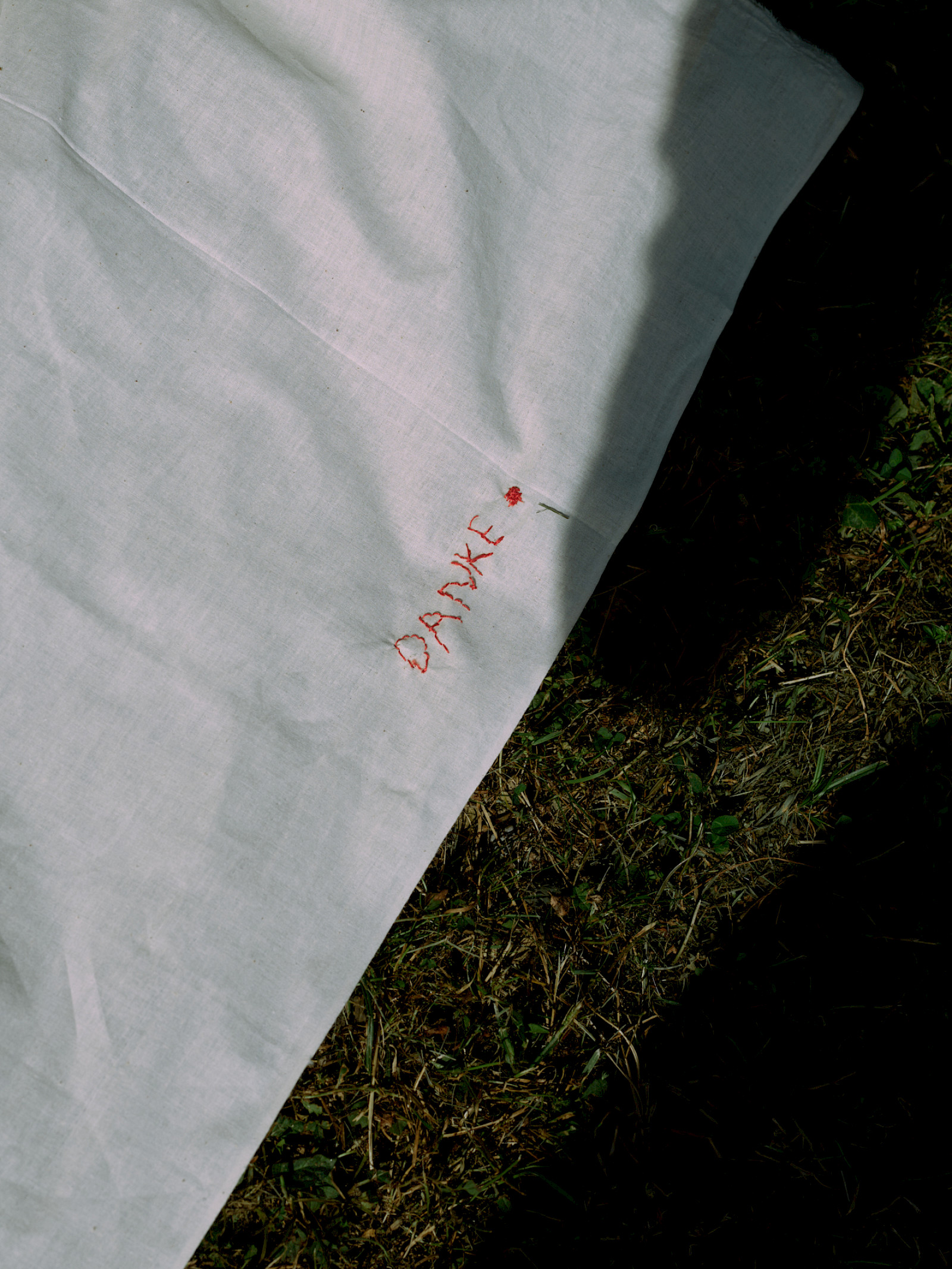
Project generoulsy supported by:
E. Fritz und Yvonne Hoffmann-Stiftung
Pro Patria Schweizerische Bundesfeierspende
Mondriaan Fonds (NL)
IHK-Stiftung
Ernst Göhner Stiftung
Straubenzeller Fonds St.Gallen
Mobiliar Jubiläumsstiftung
Ria & Arthur Dietschweiler Stiftung
Susanne und Martin Knechtli-Kradolfer-Stiftung
Walter und Verena Spühl-Stiftung
Kanton St.Gallen
Stadt St.Gallen
Bertold Suhner Stiftung
Stiftung Tröckneturm
Metrohm Stiftung
Hans und Wilma Stutz Stiftung
Dr. Fred Styger Stiftung
Stiftung Anne-Marie-Schindler
Kanton Glarus
Steinegg Stiftung